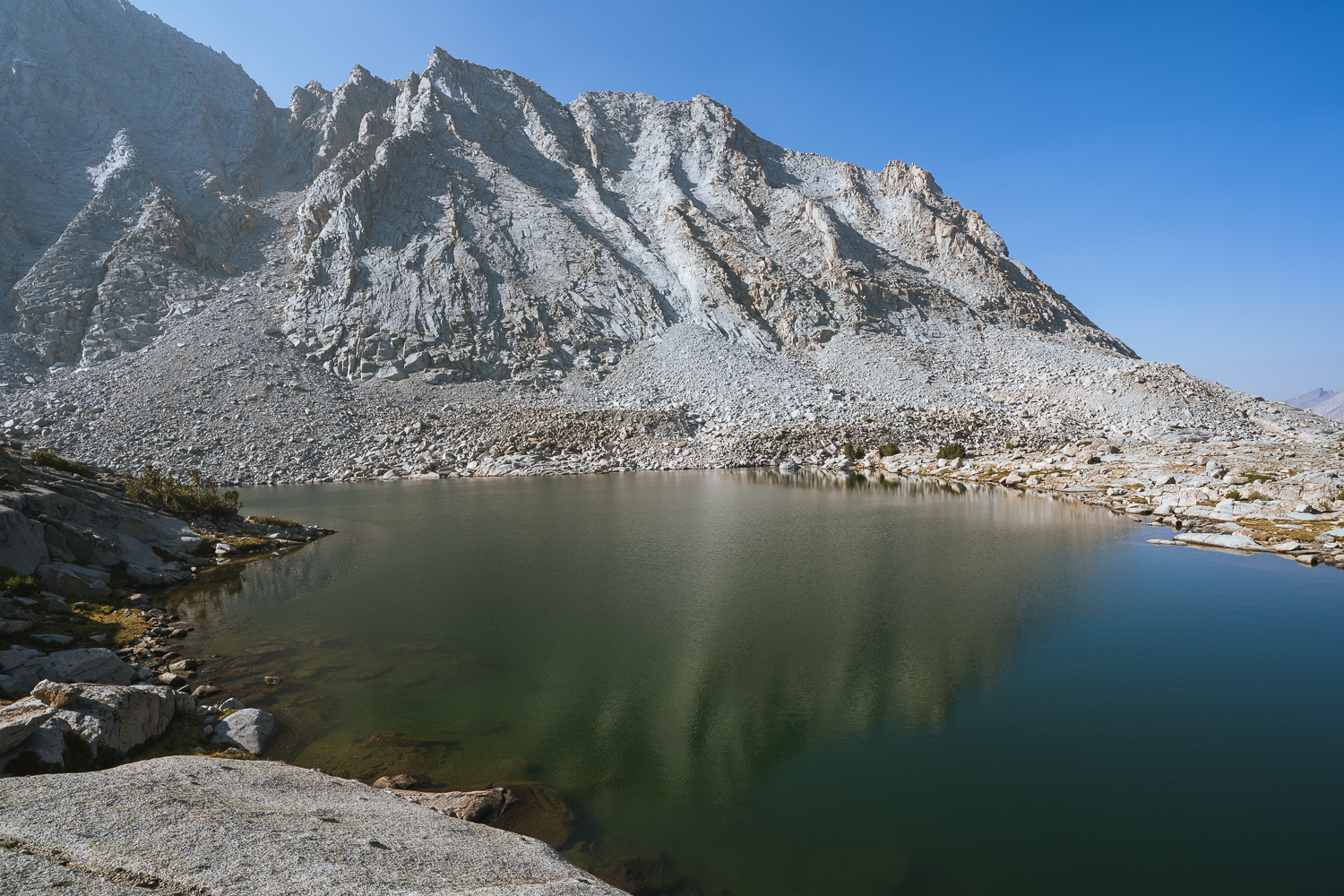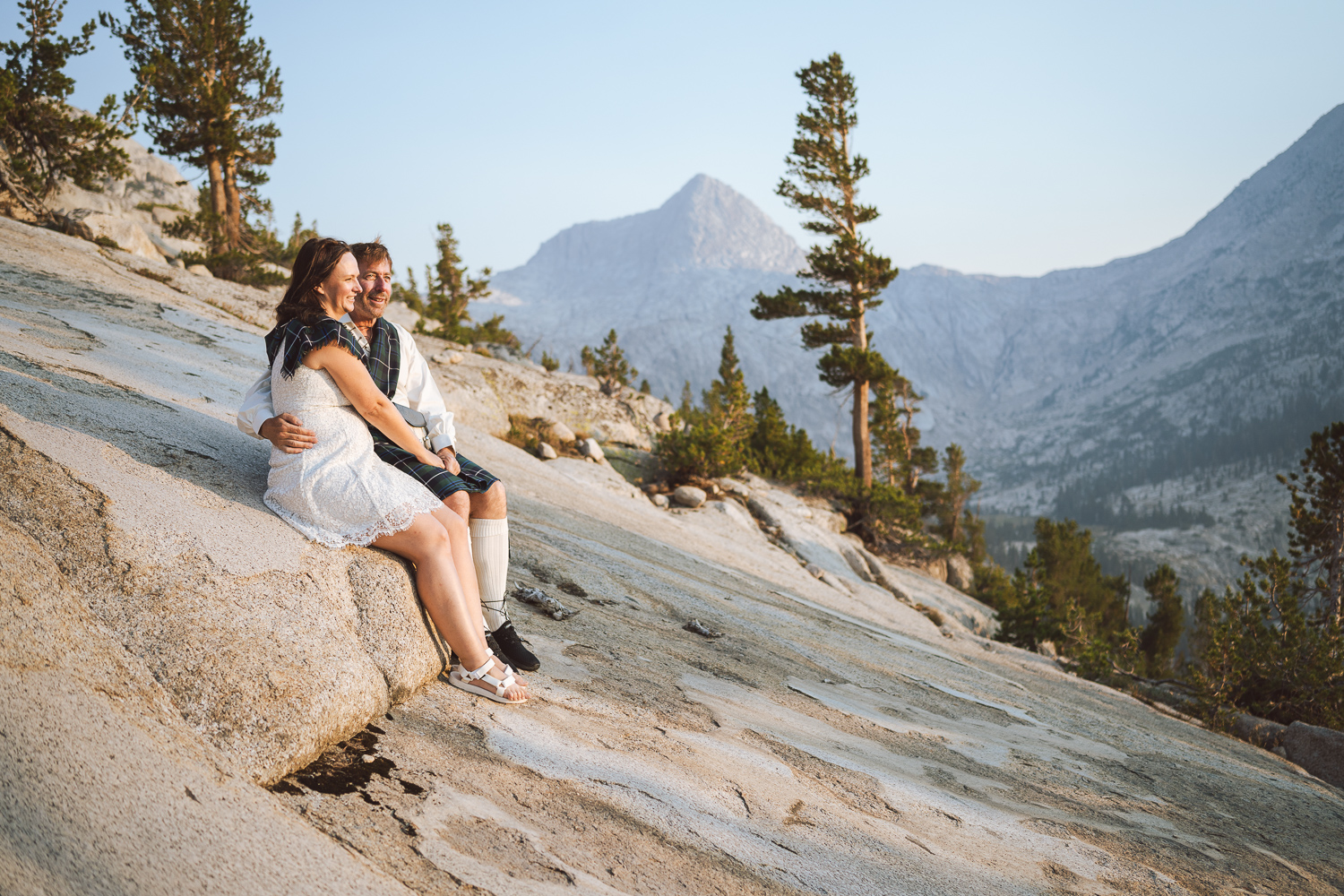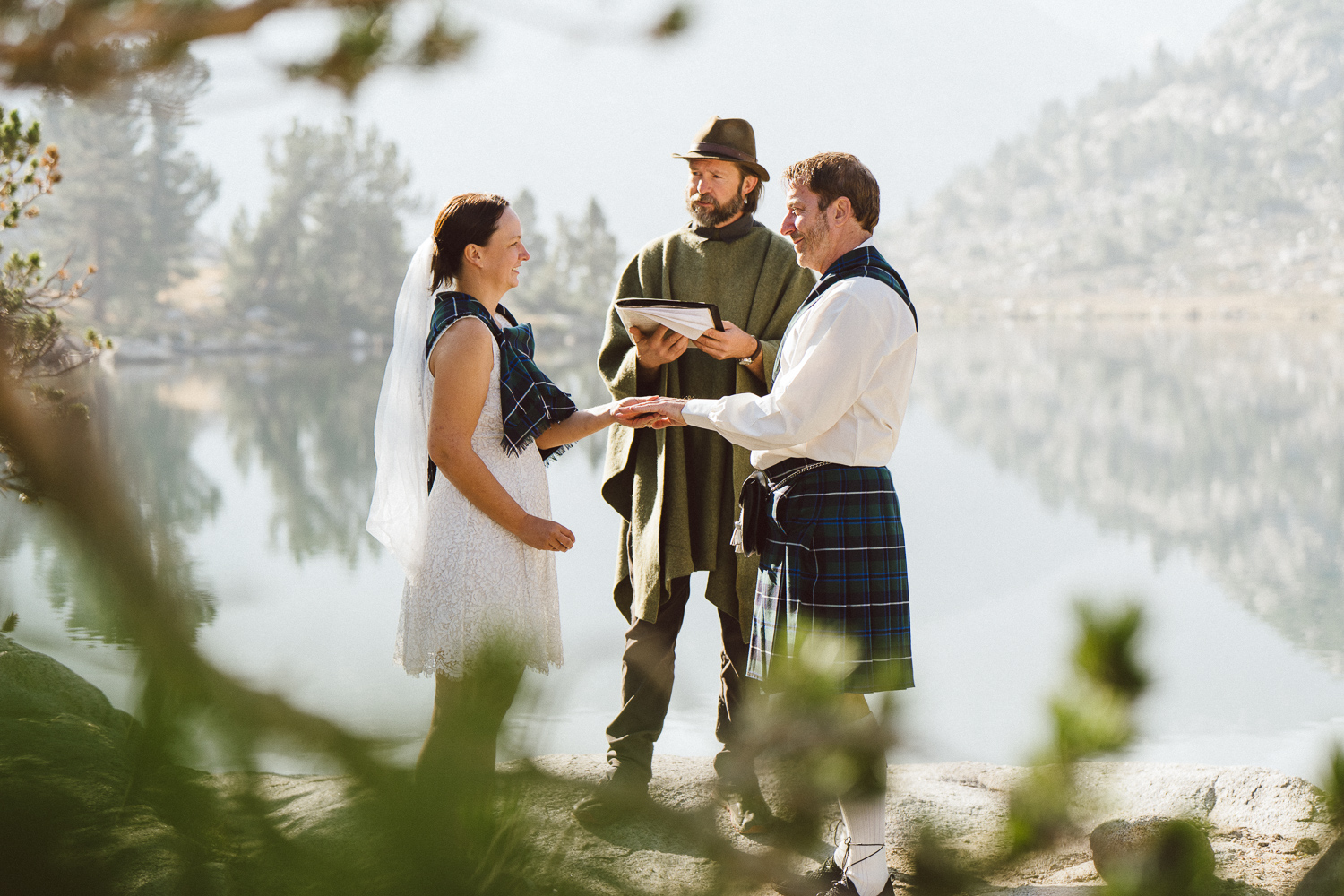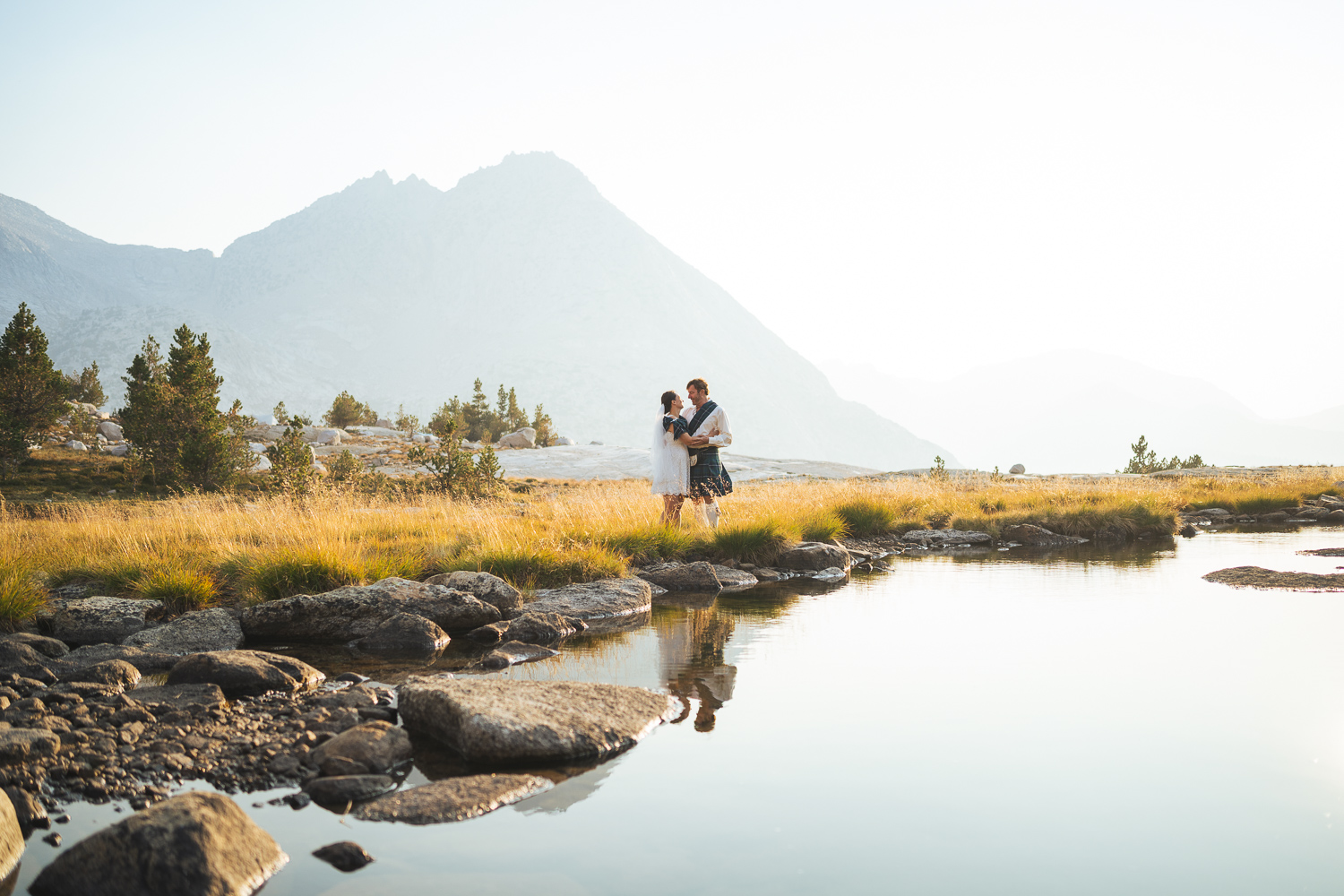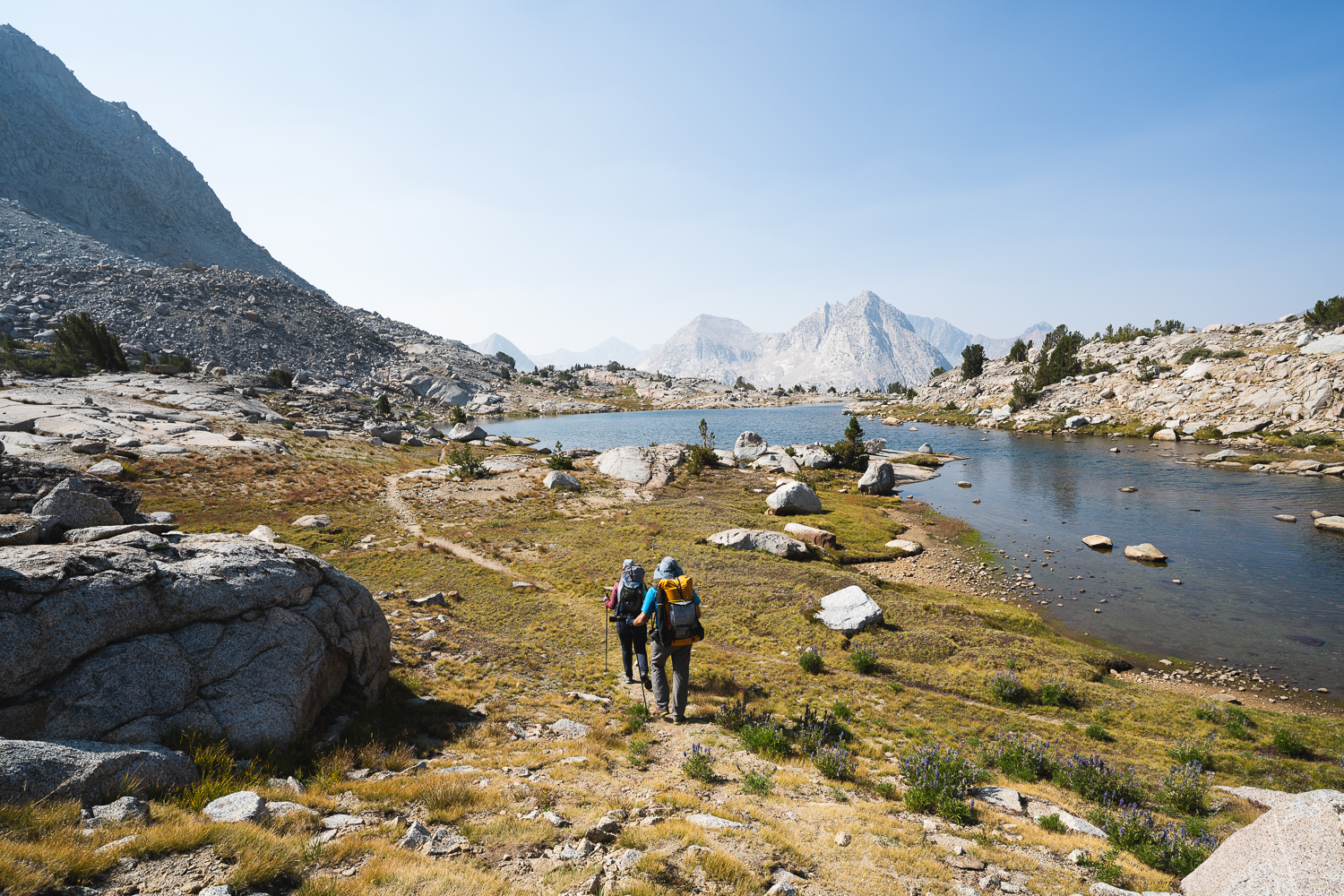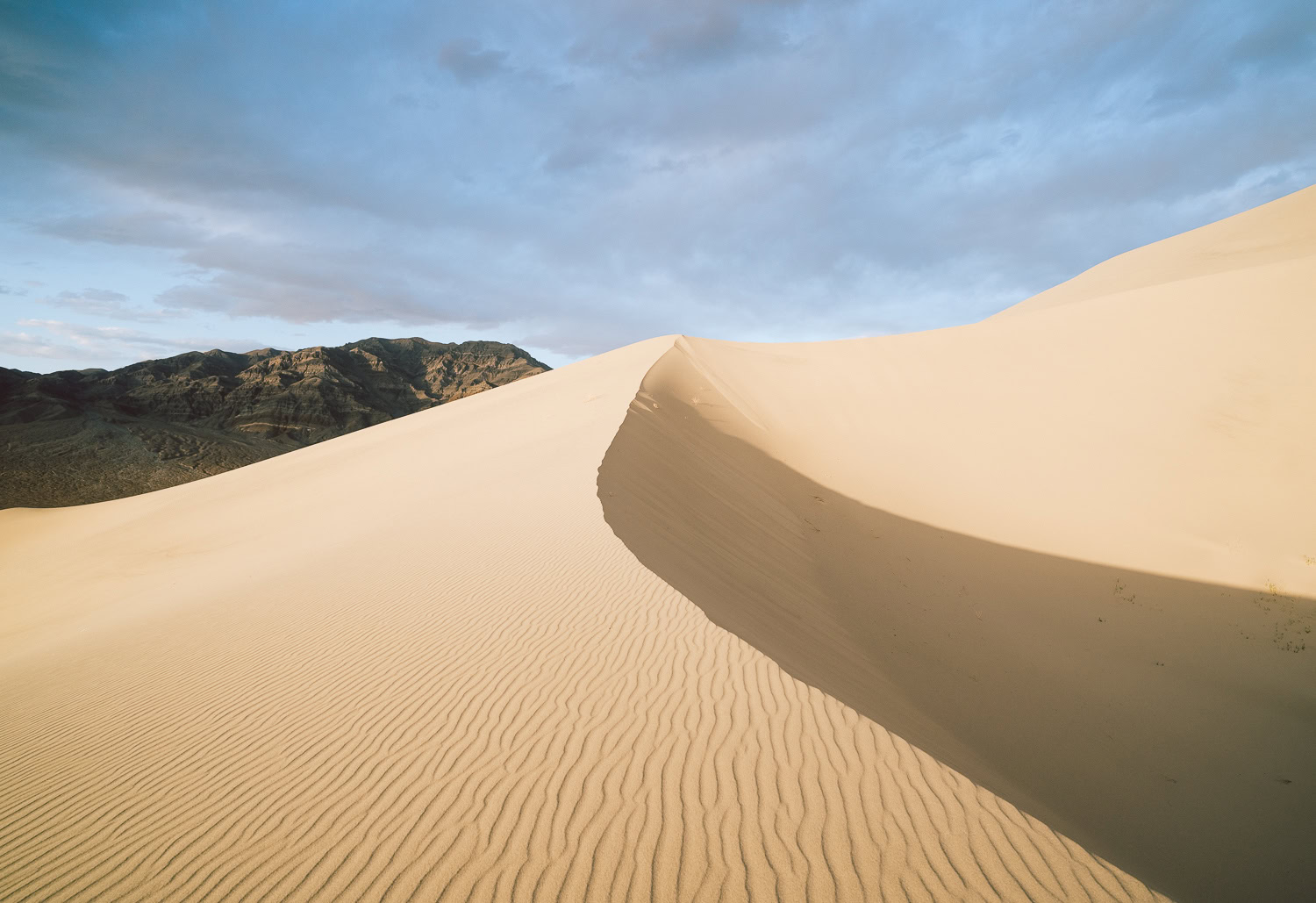1) Reasons to Hike during Your Elopement
Some couples know that they want to elope rather than plan a traditional wedding at a venue, but the details are complicated. Do you want to bring friends and family or keep it just the two of you? Do you want to hike for miles to a remote location, or simply drive to a beautiful vista? Something to note is that some of the most popular places to elope in the eastern sierra are accessible by car, like the Alabama Hills, Convict Lake, and Bree’s Lookout (Hot Creek Geological Site. The reasons to hike is more personal and symbolic. Ask yourself the following questions:
- Do you like hiking? (Is it something you already do for fun on weekends and vacation?)
- Do you like Type-2 fun? (the challenging, unpredictable part of adventures that can also mean a bit of suffering haha)
- Do you prefer the journey over the destination?
- Do you want to say your vows in a location that is remote, and unlikely to run into strangers?
- Are you ok with things not necessarily going exactly as planned?
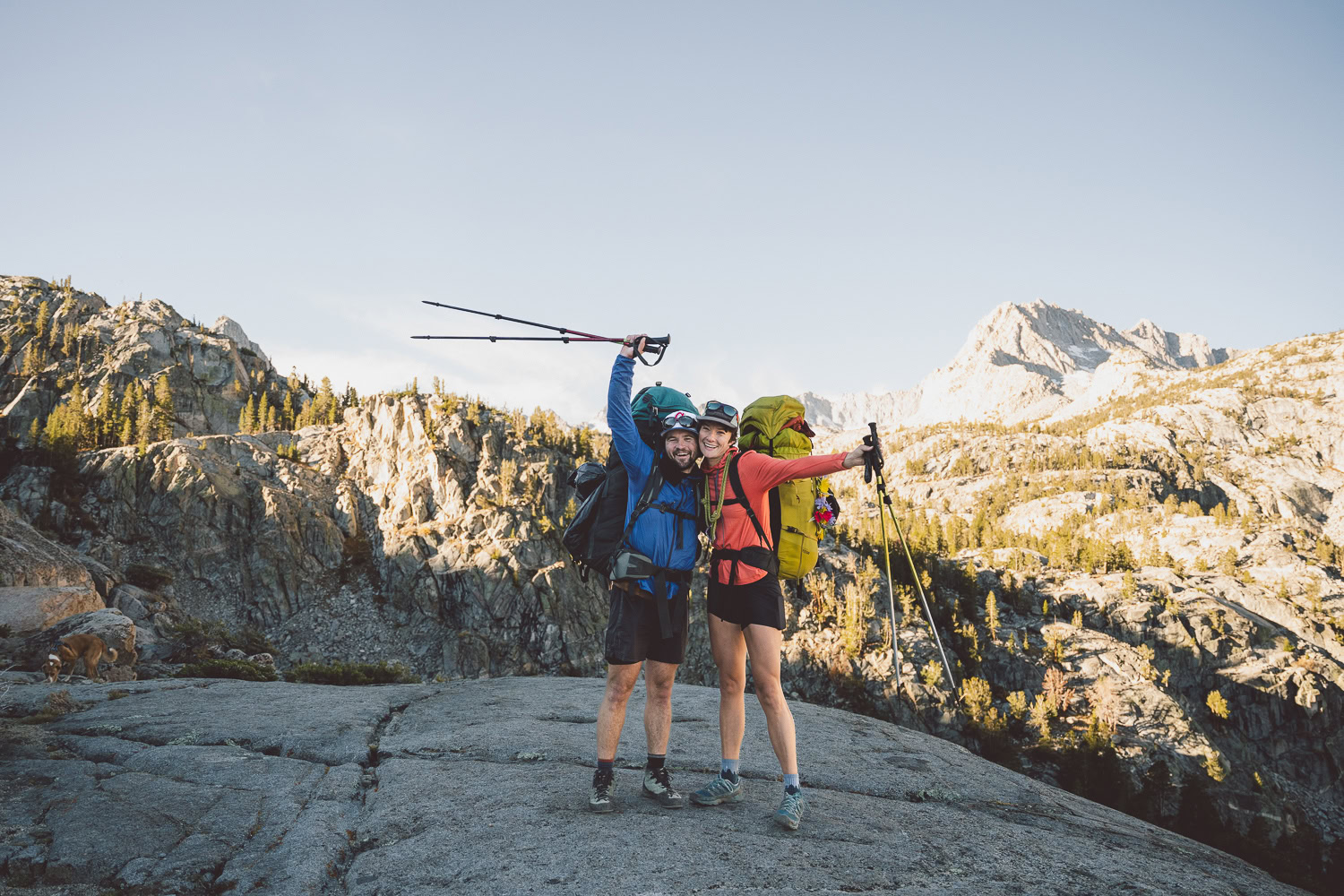
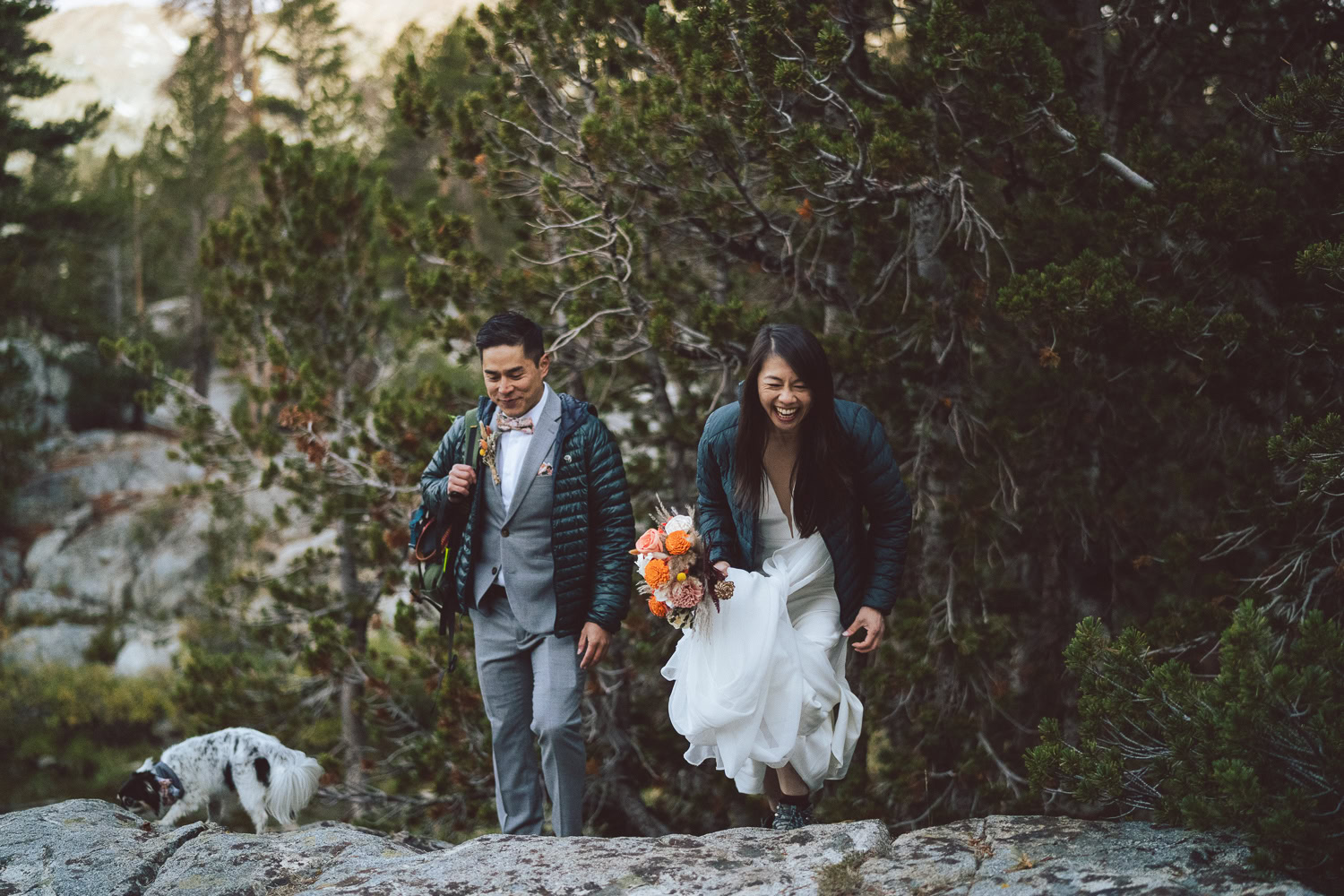
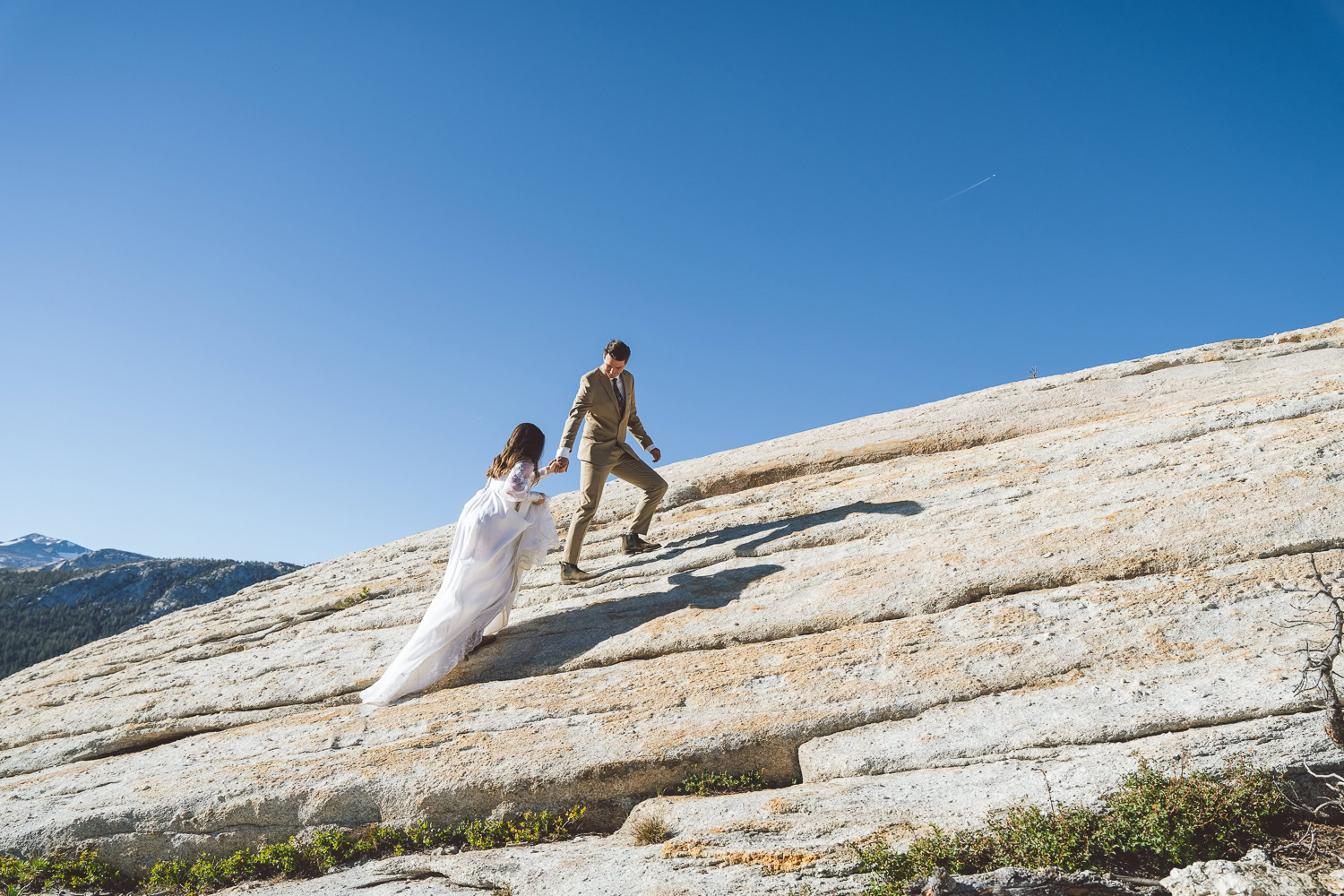
Choosing to hike to your elopement spot means embracing unpredictability and shared challenges. You could choose to hike simply because it’s fun and memorable. But if you’re the sappy type, it also sets a metaphoric tone for your relationship start to your marriage. It’s not just about reaching a beautiful location; it’s about the journey together.
2) Why Choose to Elope in the Eastern Sierra?
Mammoth Lakes and Bishop are the most populated towns in the Eastern Sierra. Some of the really popular areas include the John Muir Wilderness, the Alabama Hills next to Mount Whitney, or Mammoth Mountain. You’ll find numerous trailheads up and down the 395 highway. Mammoth Lakes is set at 8,000 feet in the forests, while Bishop is at 4,000 feet, at the bottom of the Owens Valley Floor with a more desert climate.
The Sierra is a bit different than other mountain zones in America, like the Colorado rockies, or the Cascades in the Pacific Northwest. The Owens valley is the deepest valley in America, and you can drive from 4,000 feet to 8,000 feet in about 20 minutes.
Instead of the dense fern and moss filled forests of the Pacific Northwest, the forests here are a little more dispersed. Instead of the gentle rolling foothills of the Colorado Rockies, the Sierra Mountains are steep and jagged. That means a steep hike right from the start! This also creates diverse microclimates and ecosystems in a relatively compact area — from dry desert basins to alpine meadows. You can find sagebrush, pine forests, granite boulders and features, jagged peaks, alpine lakes, etc.

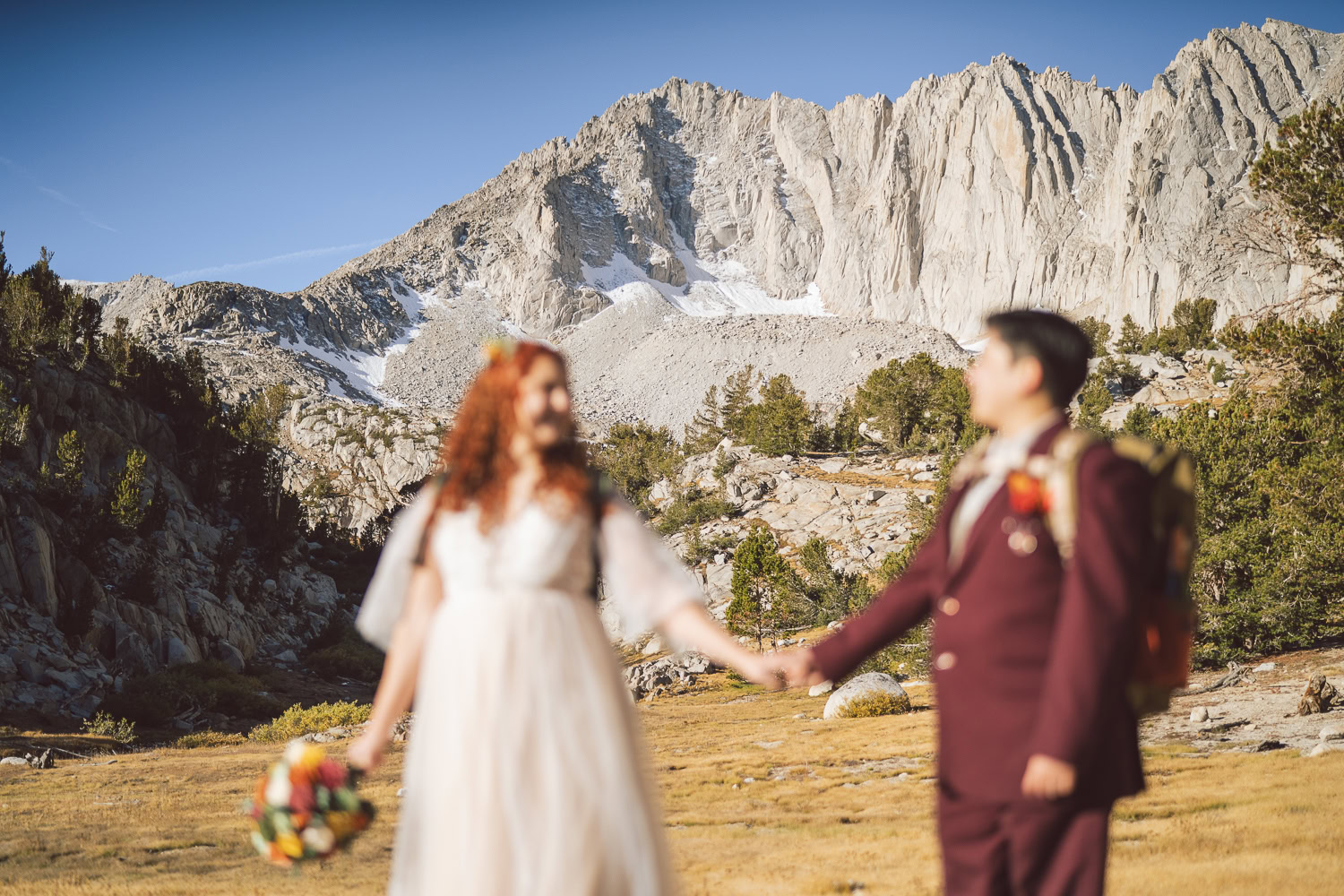
3) Permits and Leave No Trace
Navigating permits and logistics can be daunting. You’ll always want to check and see if permits are required. In general, if your group is very small (say, 4 people or less), and you are NOT in one of the national parks, you will not need a permit. If you want to bring 15-30 people (that’s a pretty common number for micro weddings and elopements that involve friends and family), your options quickly become limited.
It’s essential to contact the local ranger station for information on permits, regulations, and best practices for Leave No Trace. I always suggest booking my full day (up to 10 hour) package for hiking elopements. Sometimes we will wrap up as early as 8 hours, but having spare time is so helpful.
4) Including Friends and Family on a Hiking Elopement
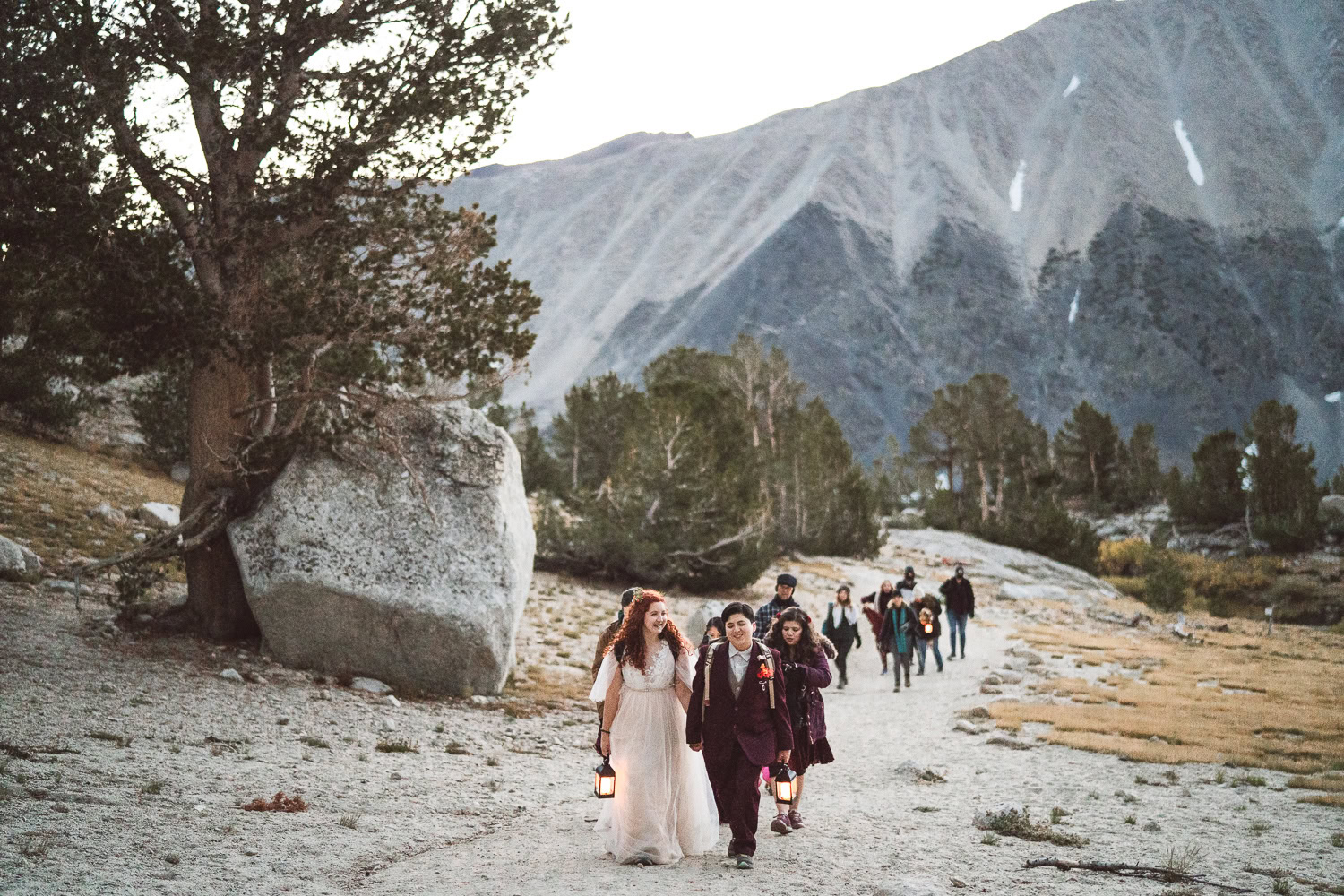
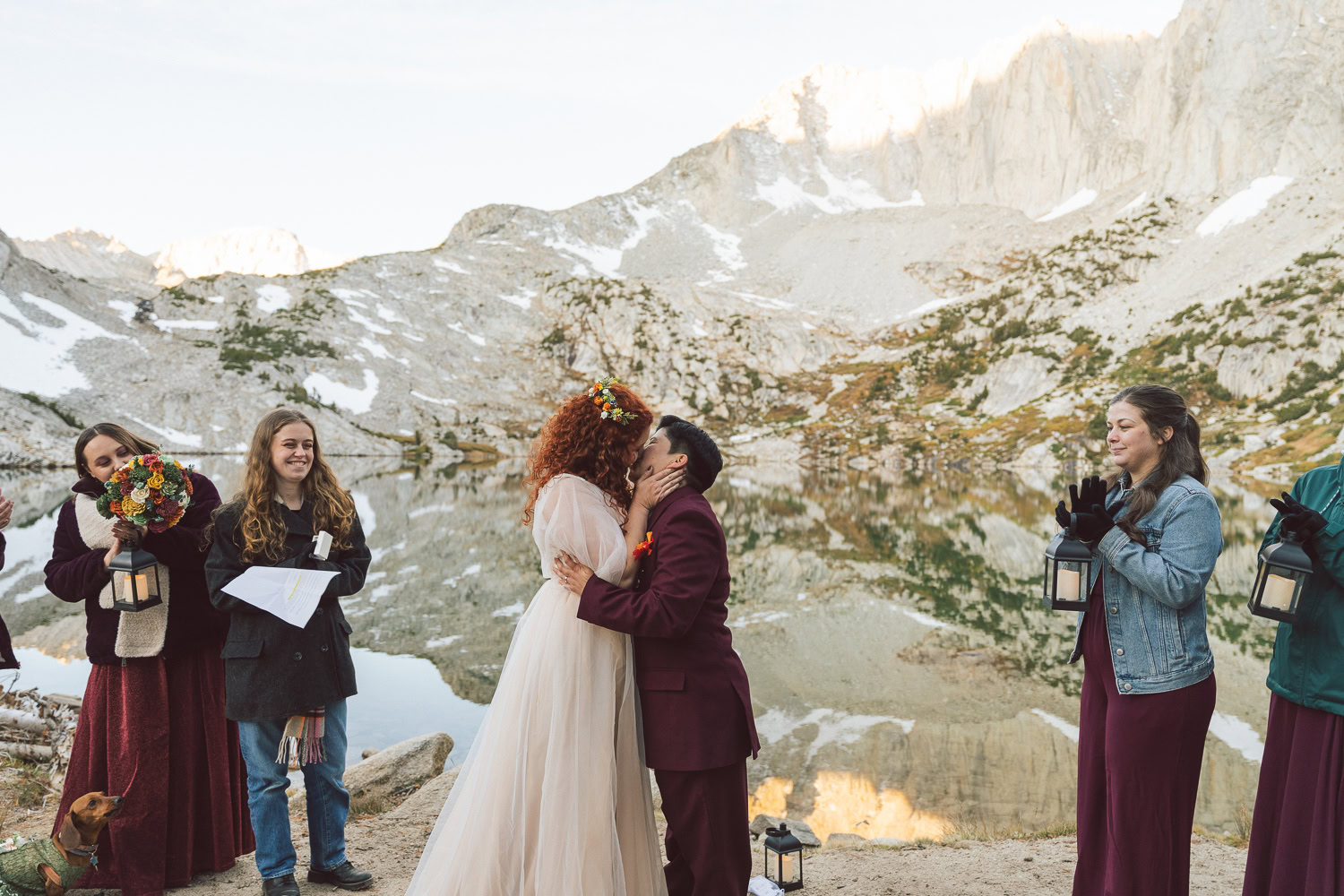
This is tricky. I see a lot of people who want a bit of both on their wedding day. They want the hiking elopement, and they want to invite their favorite people to join. But the simplicity of you two hiking to a destination goes away when you add 10-20 guests. It’s simply impossible to gauge everyone’s athleticism.
Places like Convict Lake Resort near Mammoth, the Double Eagle Resort in June Lake, and Cardinal Village in Bishop are ideal if you want to get everyone together, keep them comfortable, and not drag everyone to the top of a peak!
5) Benefits of Sunrise or Sunset
Sunrise and Sunset are both amazing options. Depending on where you are, if you want to see the red alpenglow on the mountains (like in the photos below), Sunrise is ideal because the sun rises from the east. This will cast the most natural flattering light on your faces. At sunset, you will miss the alpenglow, but you will have an extended period of soft light as the sun dips behind the mountains, and a better opportunity for blue hour, and starry photos.
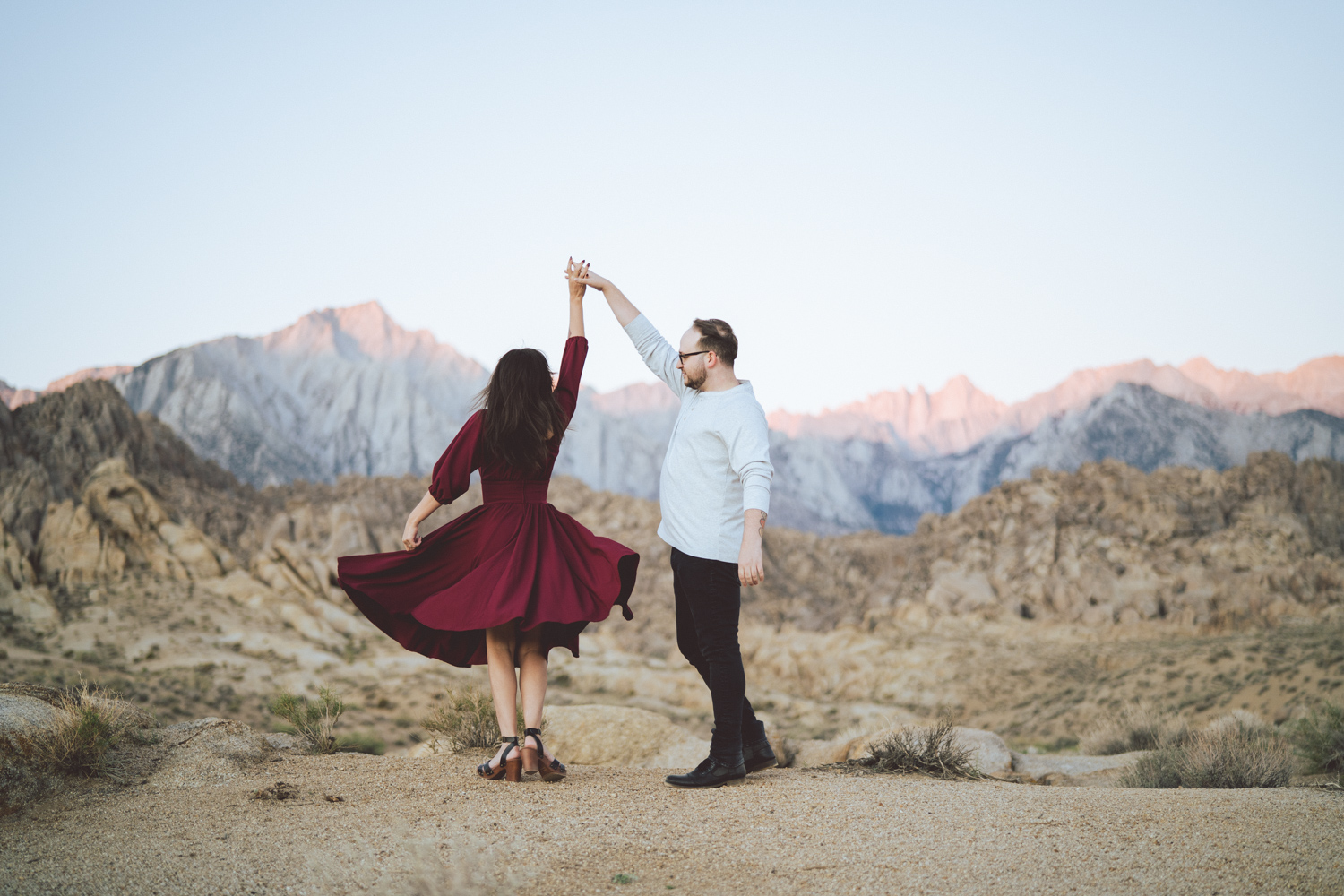
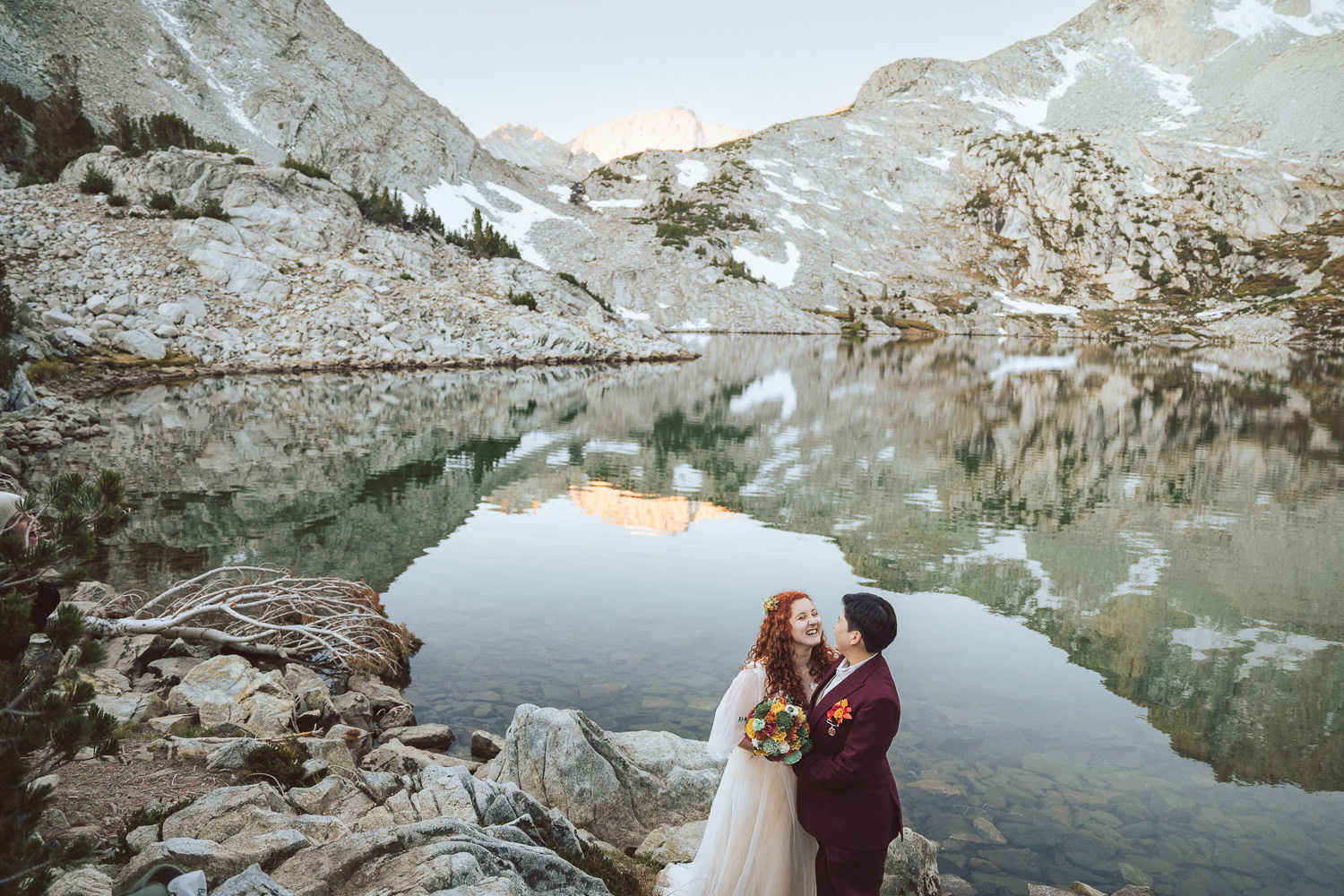
In my opinion, your comfort and enjoyment is just as important as the light and the photos. So, answer these questions:
- Are you an early bird or a night owl?
- Do you get a thrill at the thought of a 3am wake up call or does it make you sick?
- Do you want to feel like the day is ramping up, or winding down?
There is no right or wrong answer.
6) Opportunity for Astrophotography (Star photos)
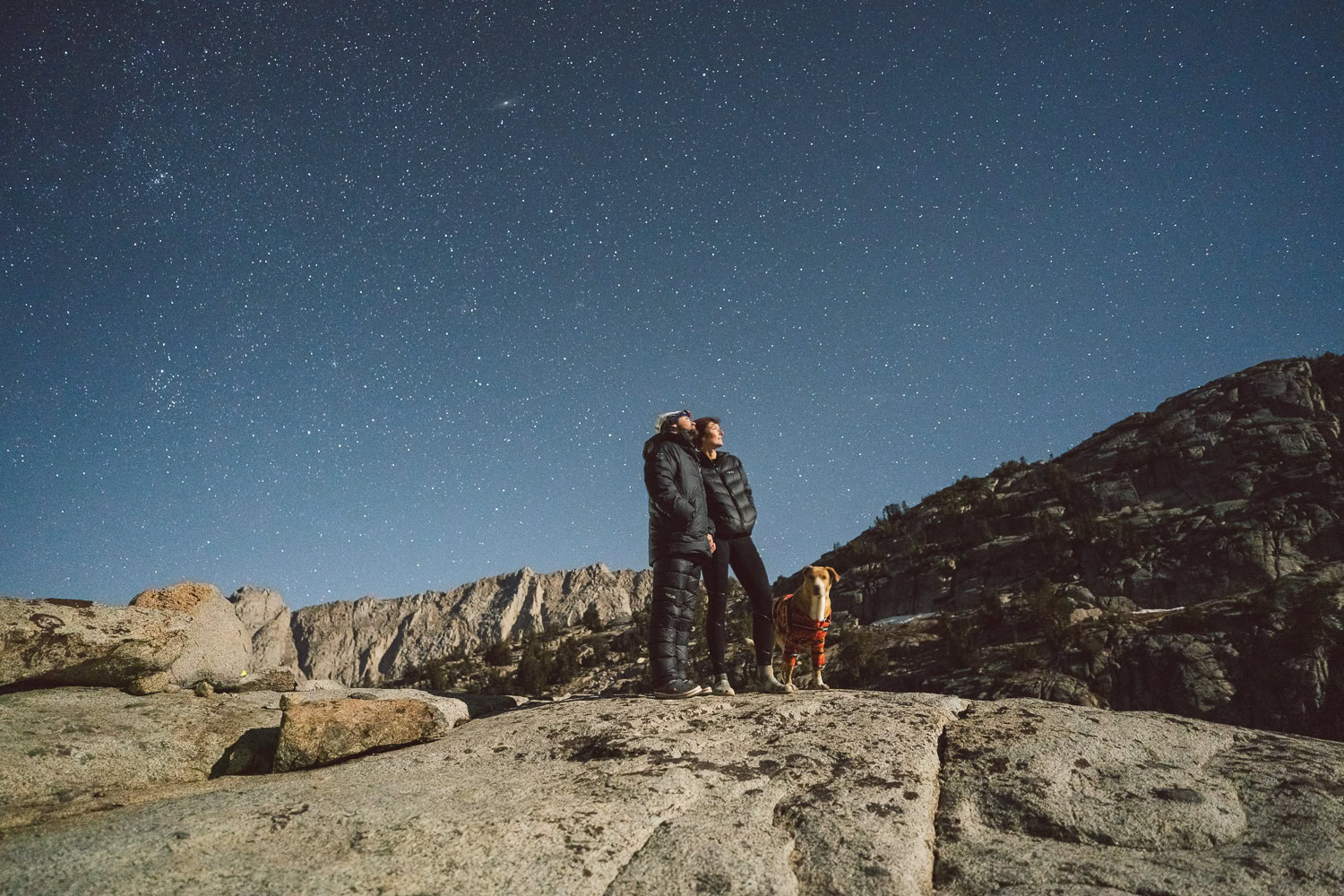

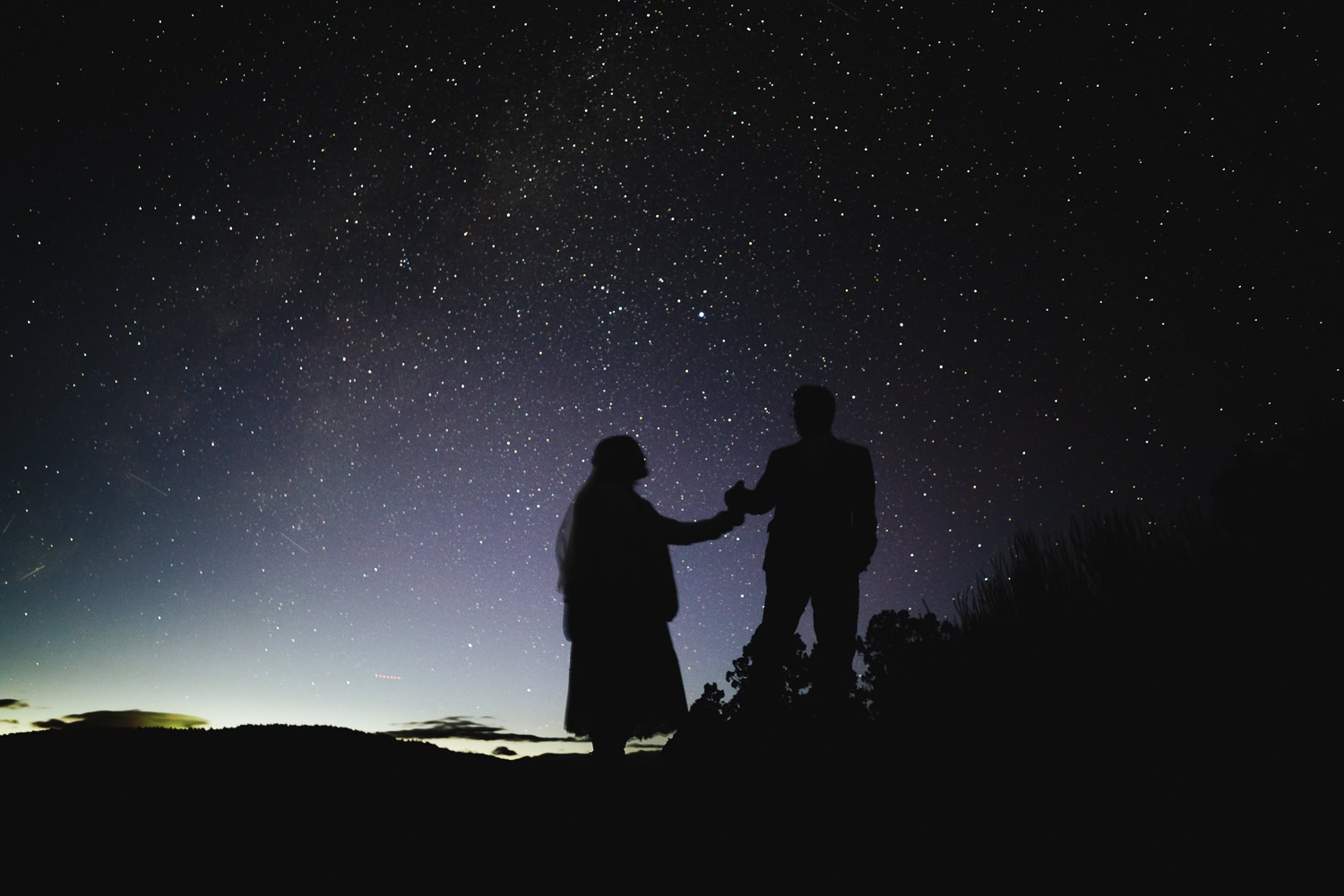
This is becoming a popular request with couples! You can tag them onto etiher end of your day, but it is typically much easier to do with sunset elopements. Things that can affect star photos are:
- The lunar phase (full moon means better light on you, a new moon means silhouettes and brighter stars)
- More time in your package. (Typically, we need to wait about 2 hours after our last blue hour photos until we can take advantage of stars. And for each hour of astrophotography, you might get 2-3 good shots.)
- Weather (cloud cover, cold, etc.)
7) A List of my favorite hikes for elopements
- Blue Lake out of Lake Sabrina
- Ruby Lake in Mosquito Flats / Little Lakes Basin
- Death Valley (Artist’s Palette and Zabriski Point)
- Tuolumne Meadows
- Extra credit: Make it backpacking! How to Plan a Backpacking Elopement
Blue Lake
View full elopement here: Blue Lake
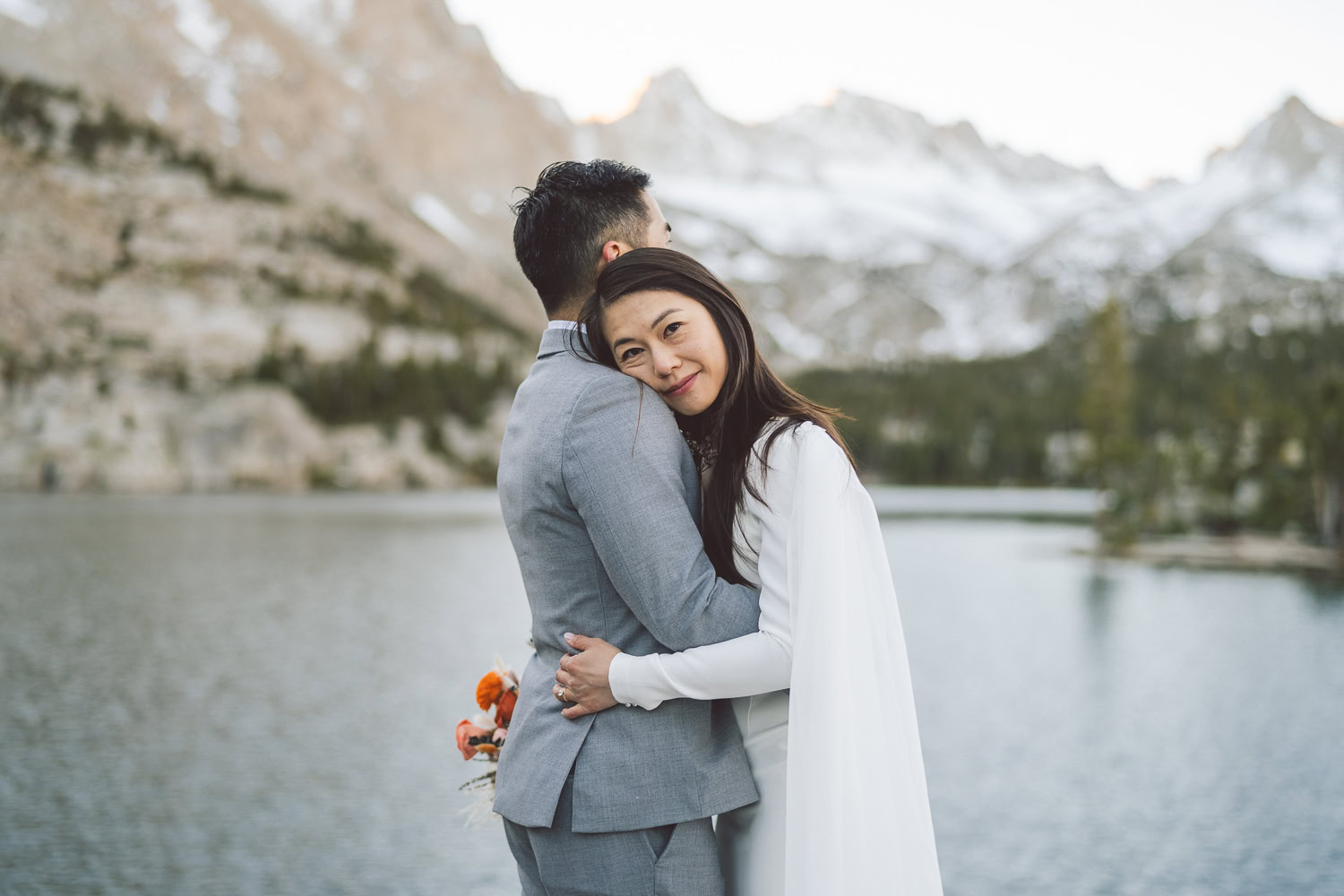
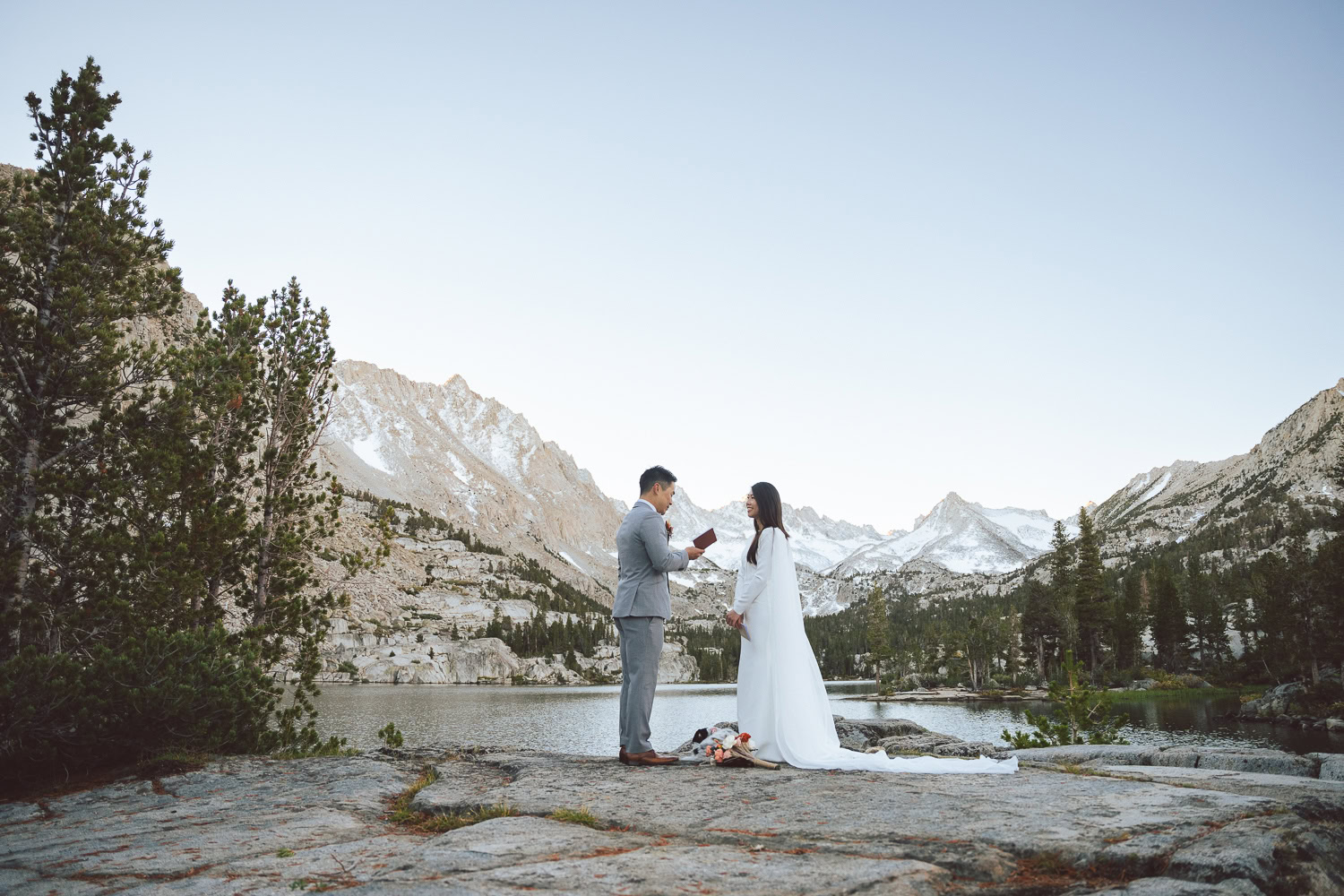
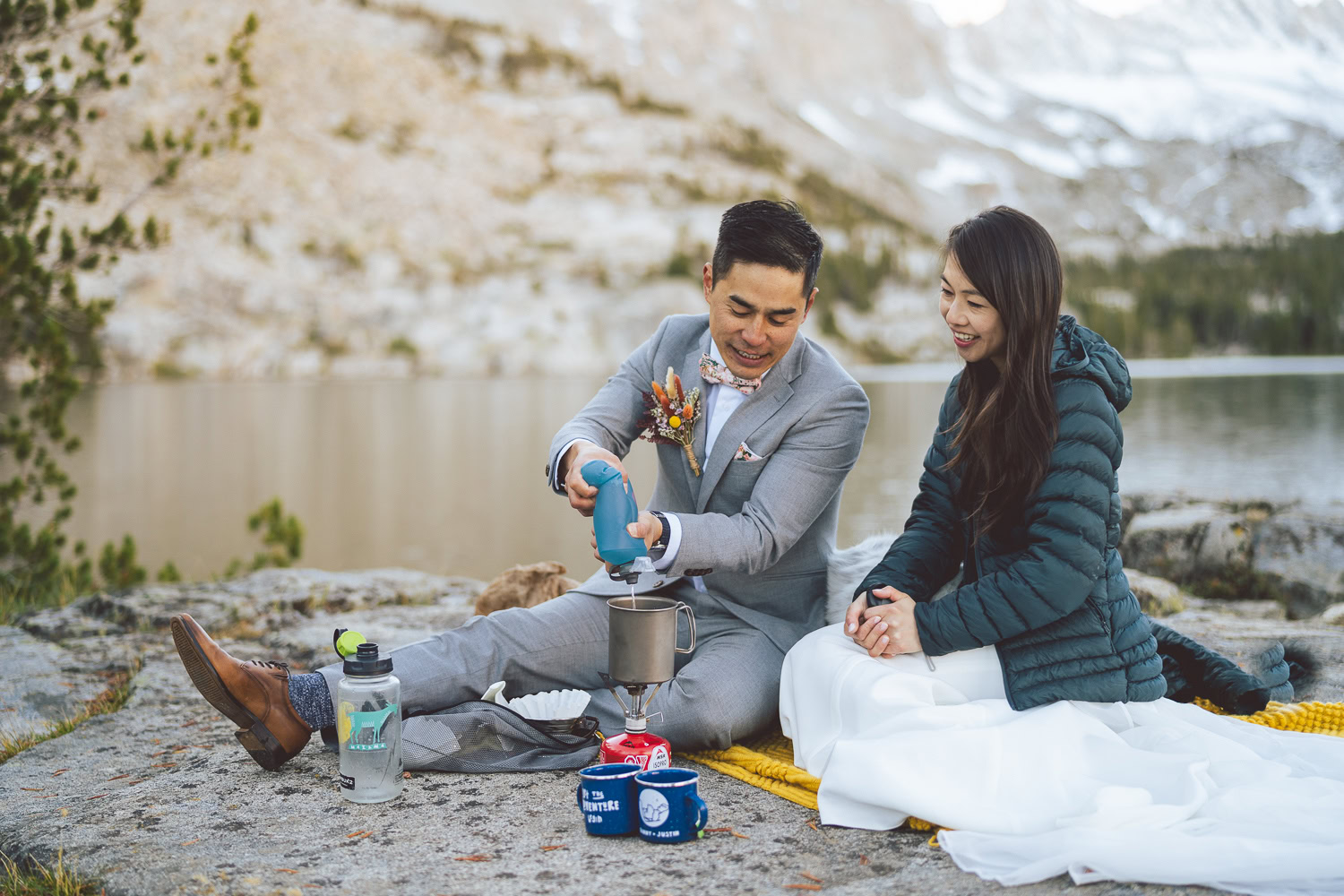


Ruby Lake
View full elopement here:

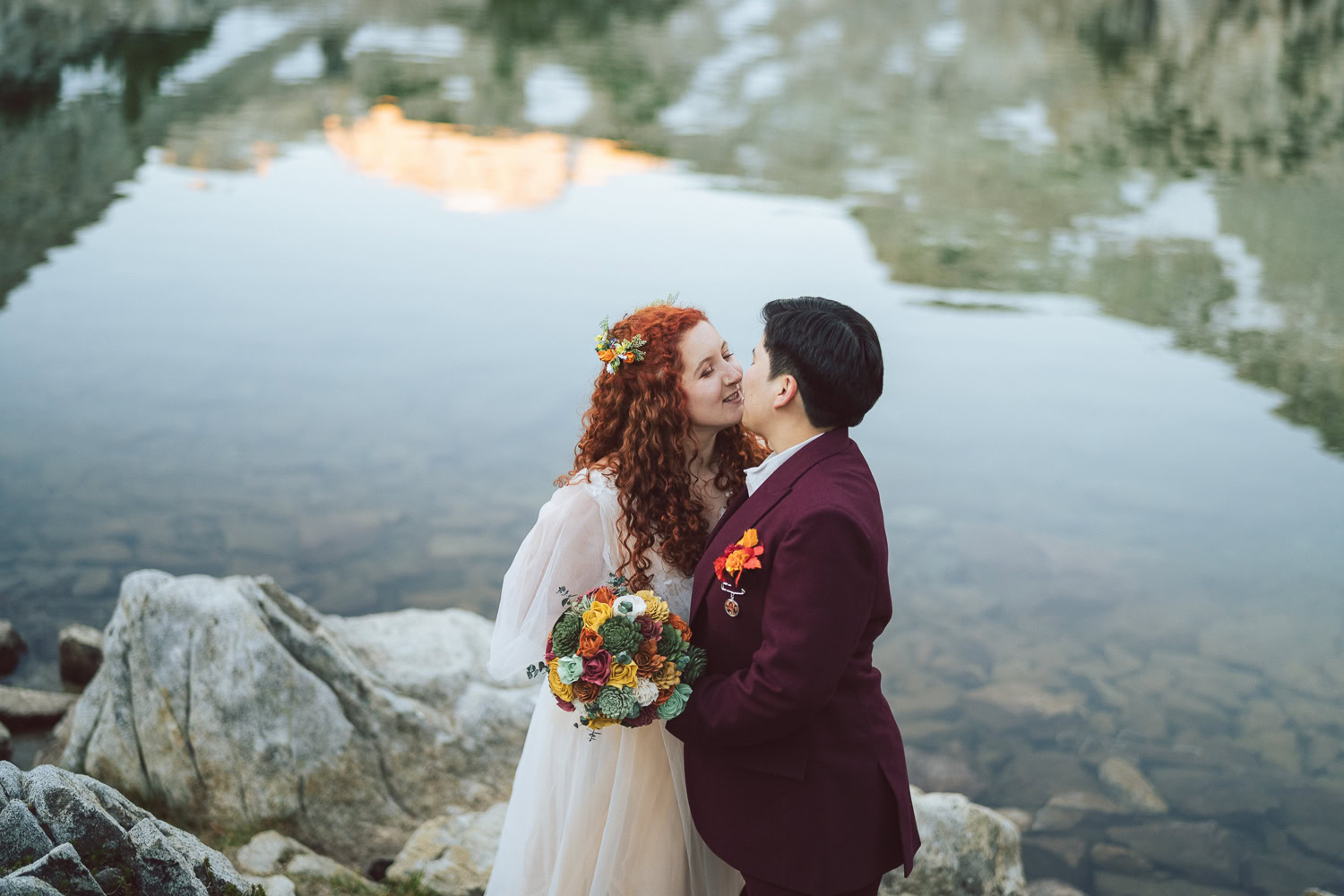
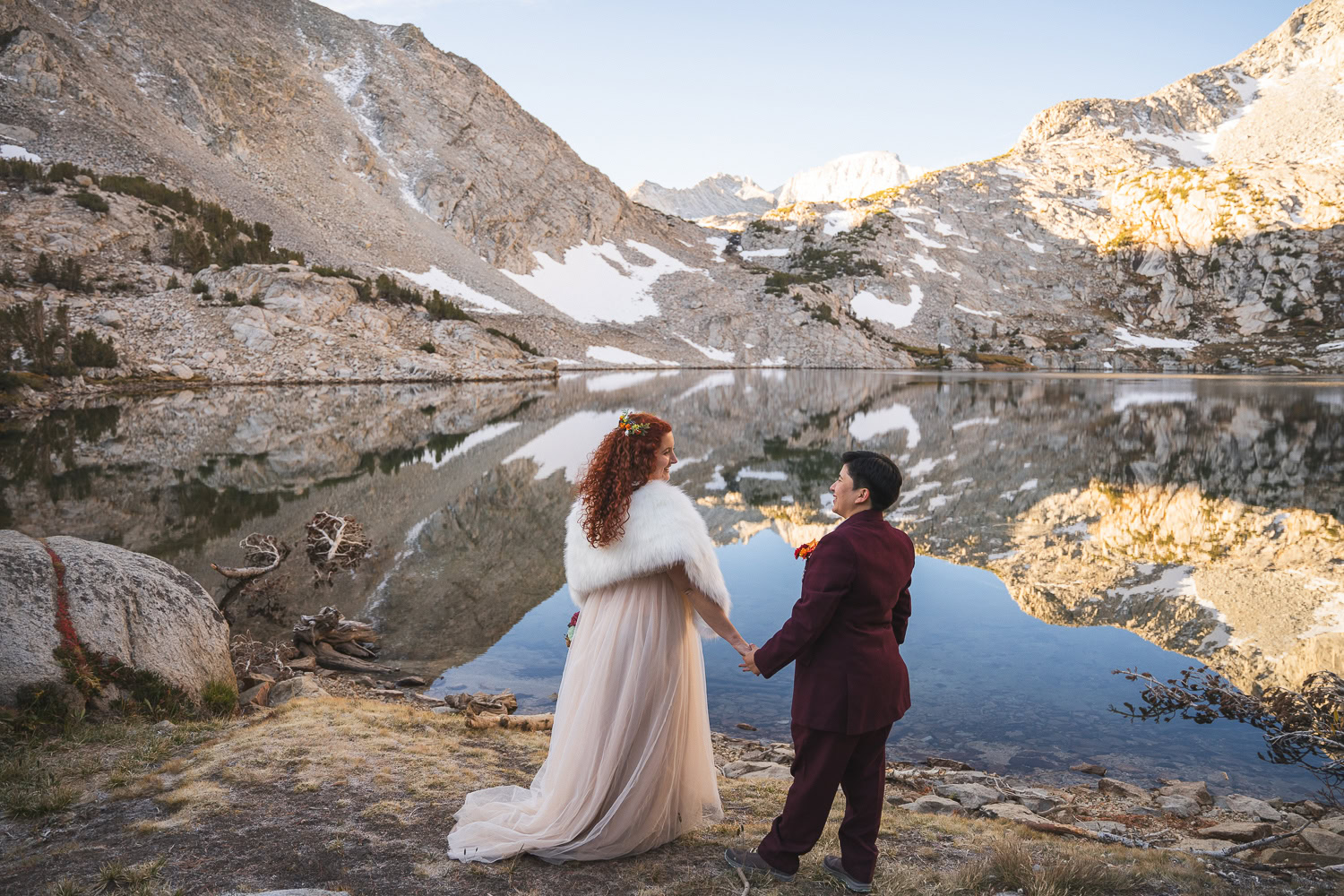

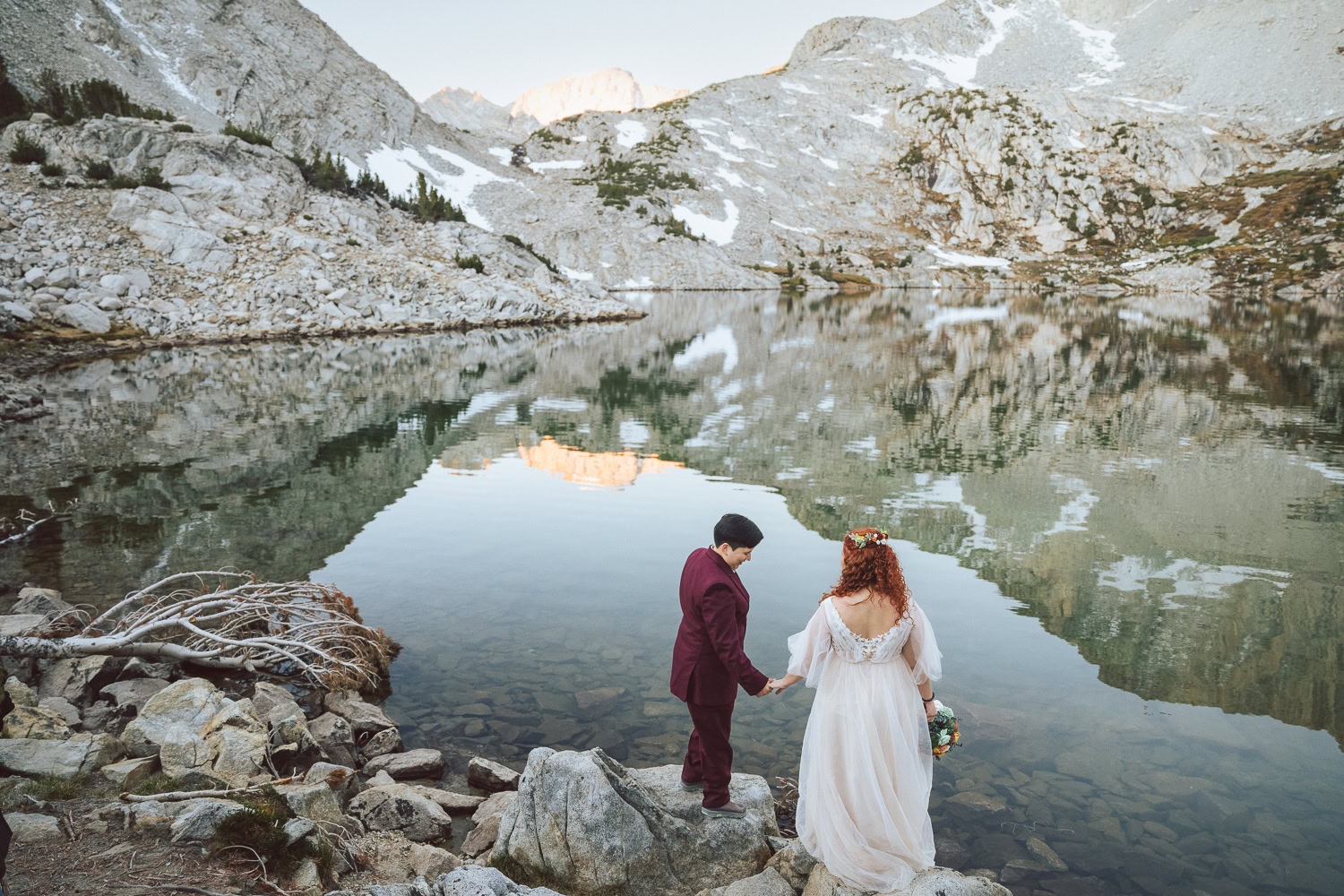
Death Valley
View Full Elopement Here: Death Valley

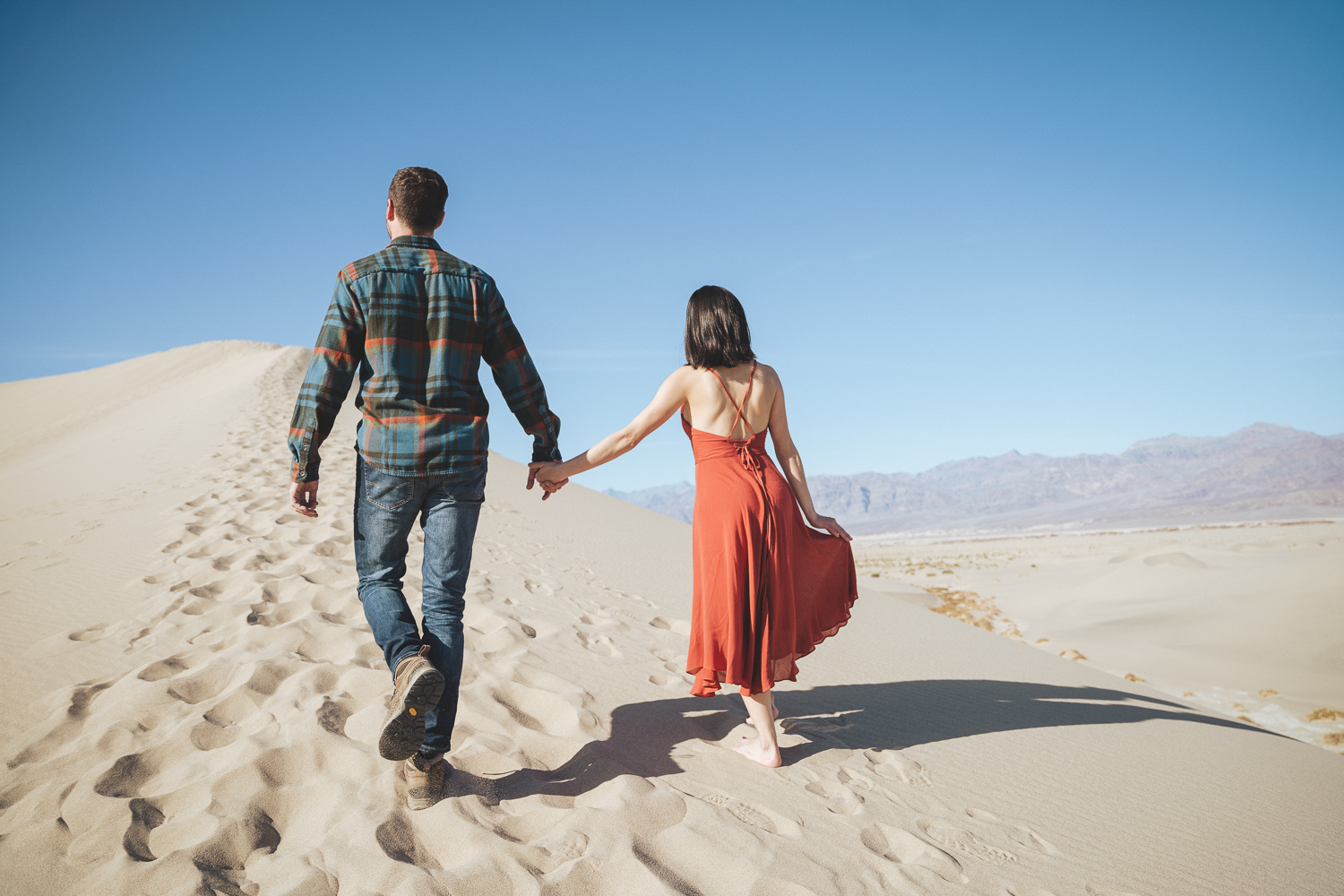
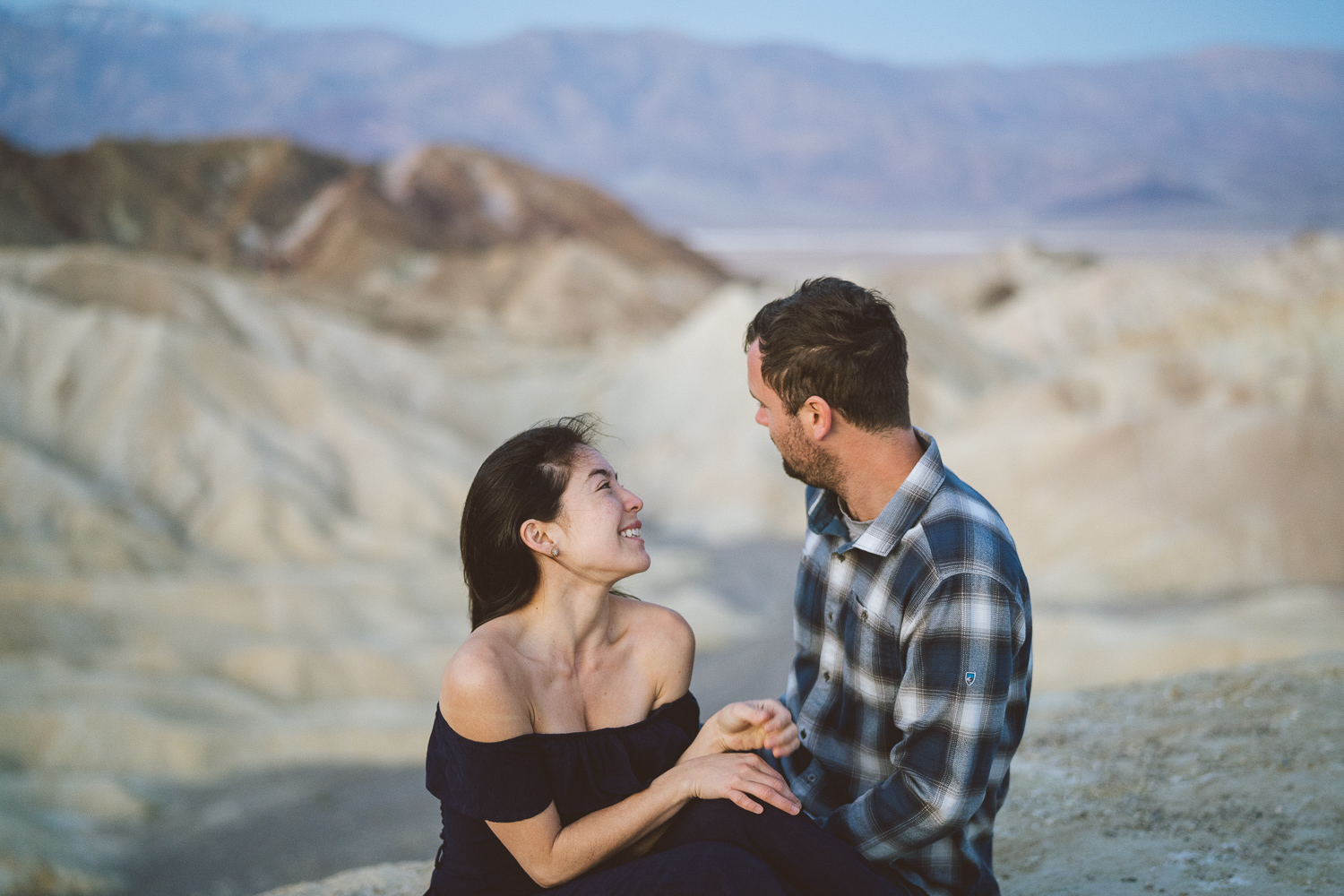


Tuolumne Meadows
View Full Elopement Here: Tuolumne Meadows
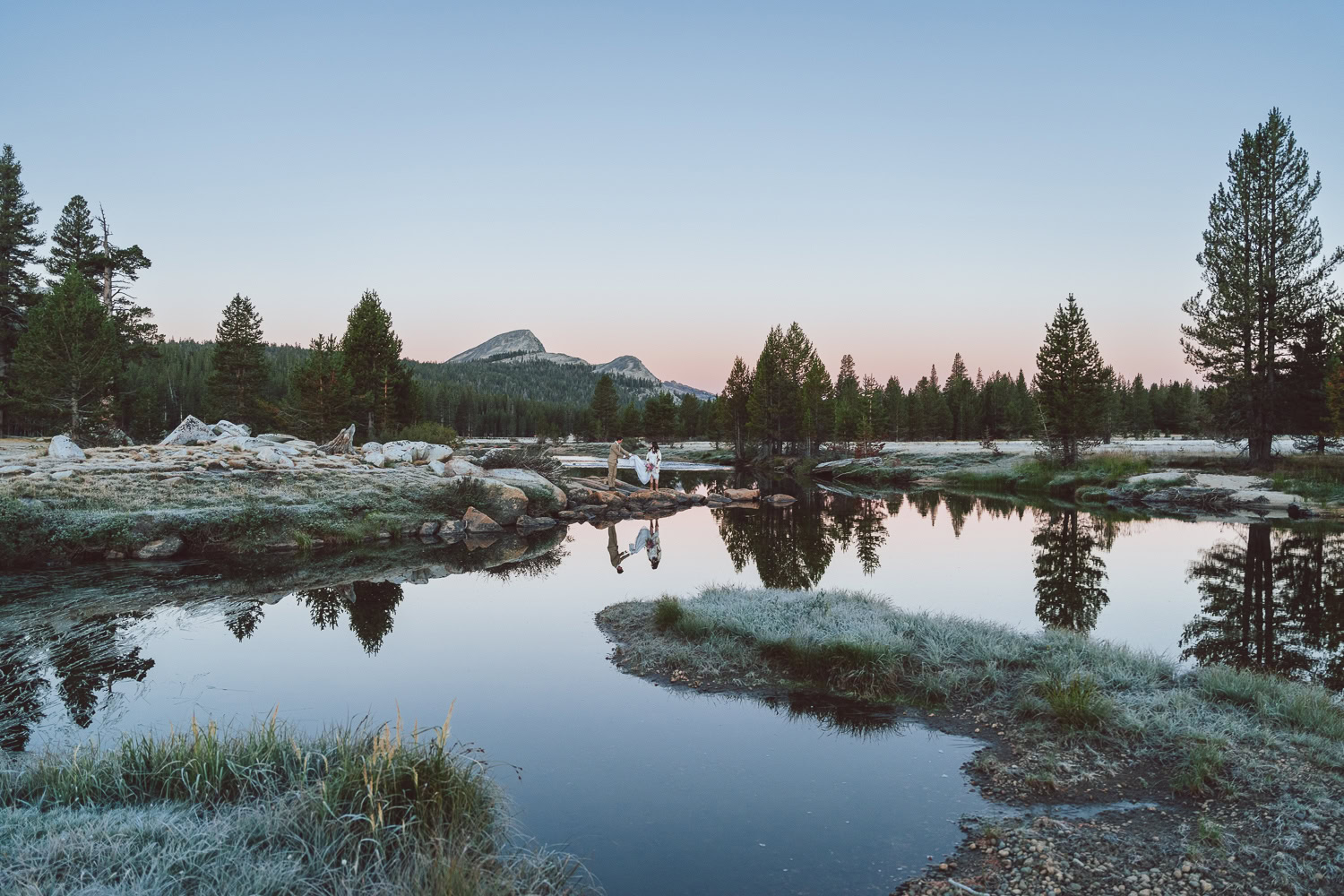

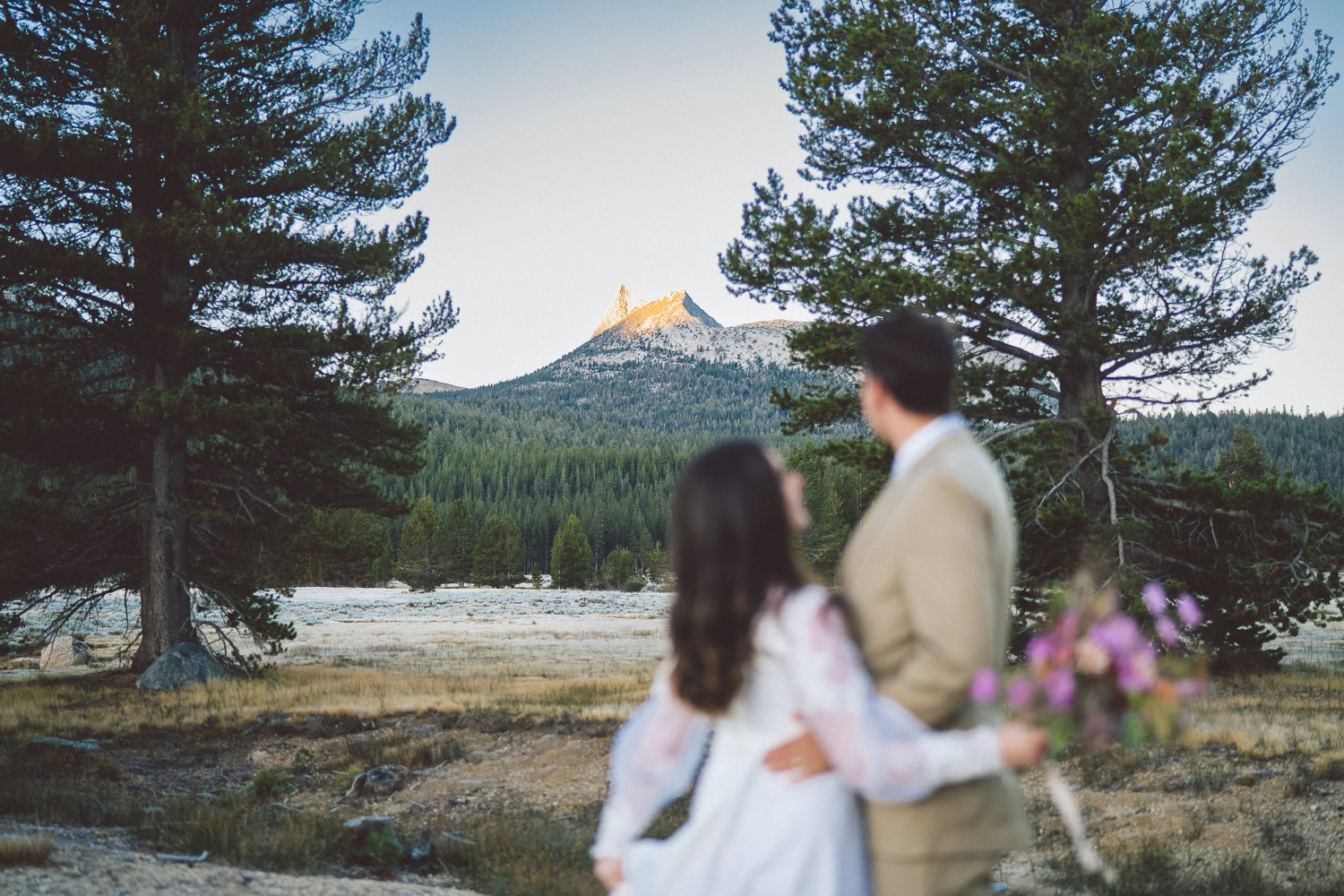
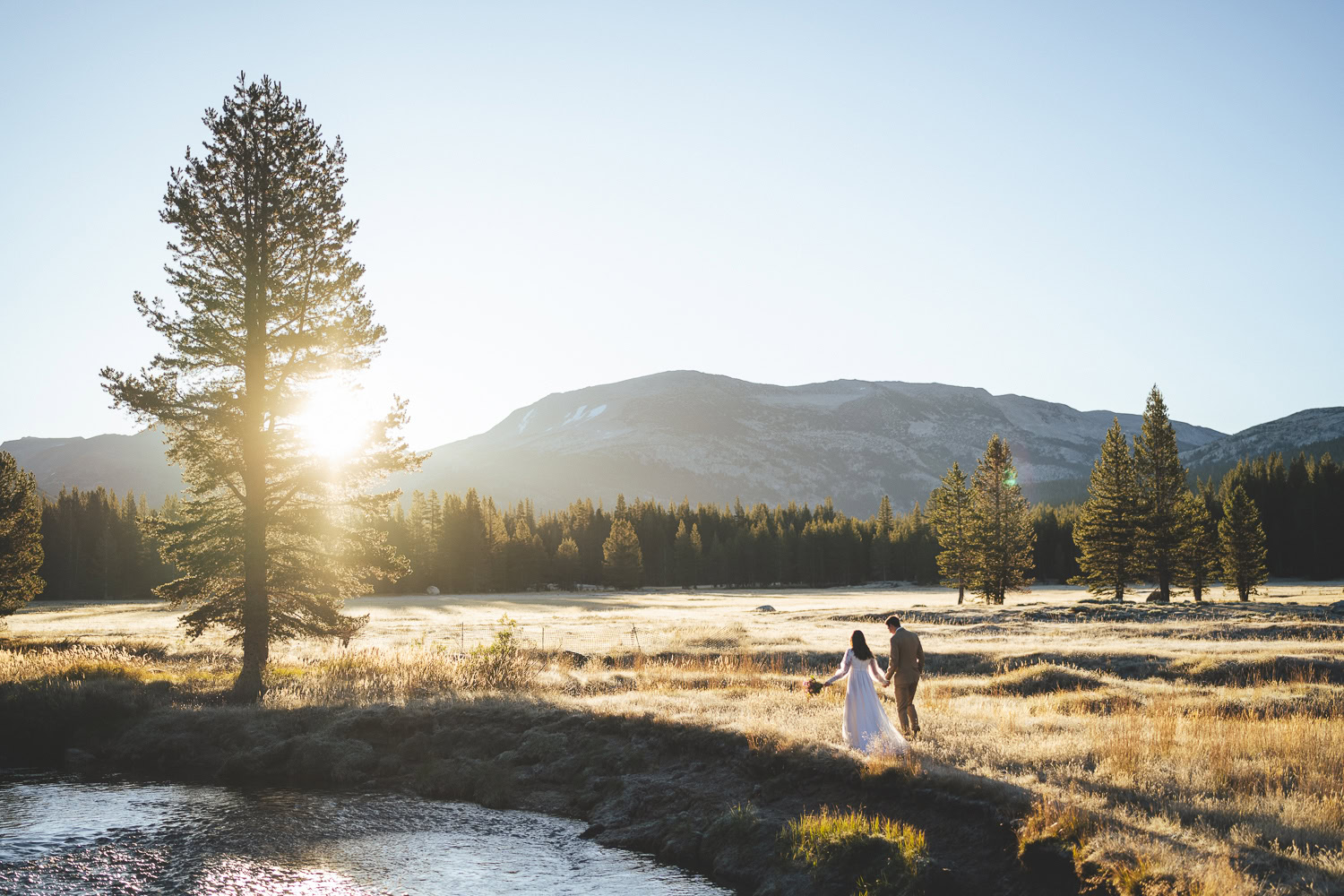
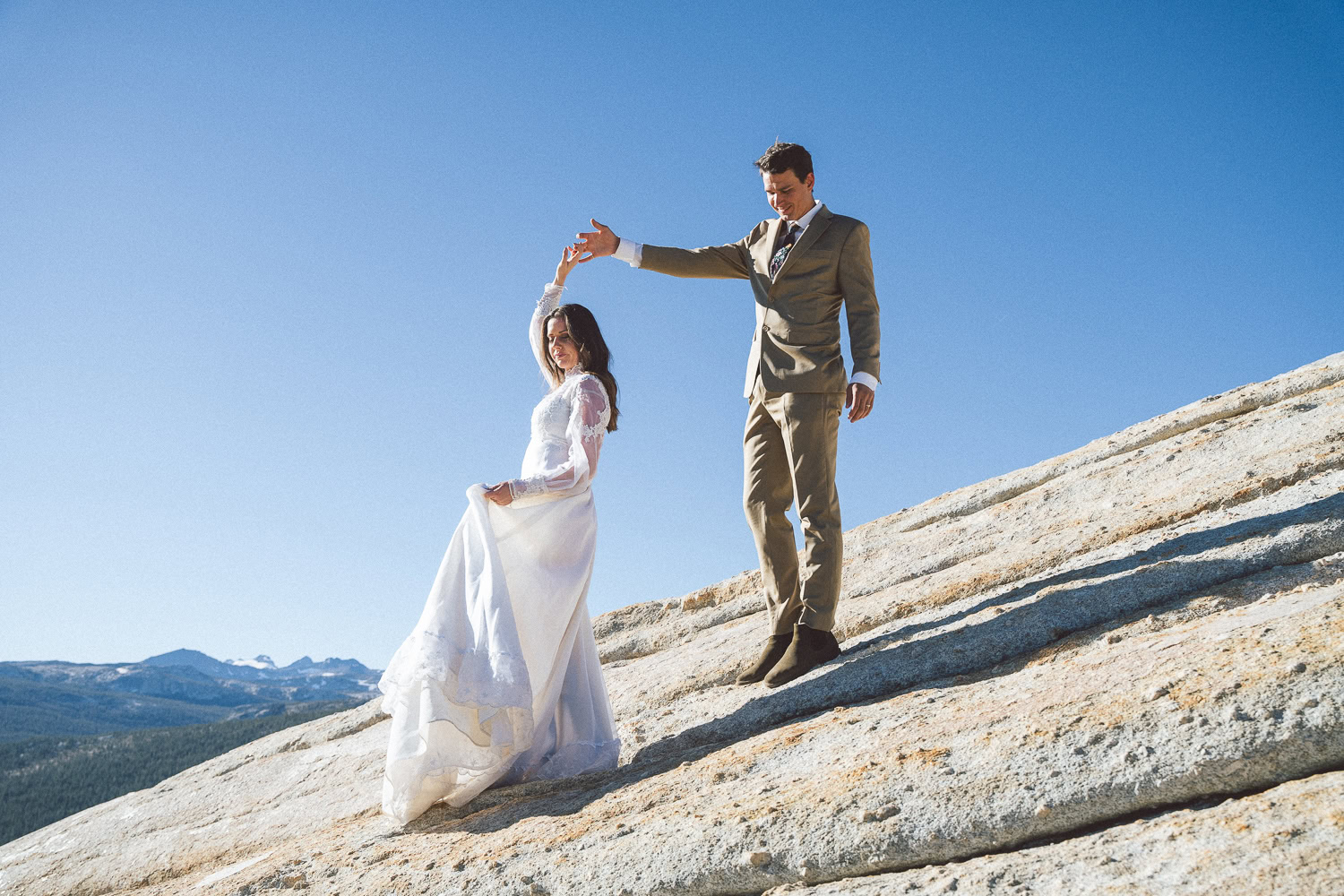
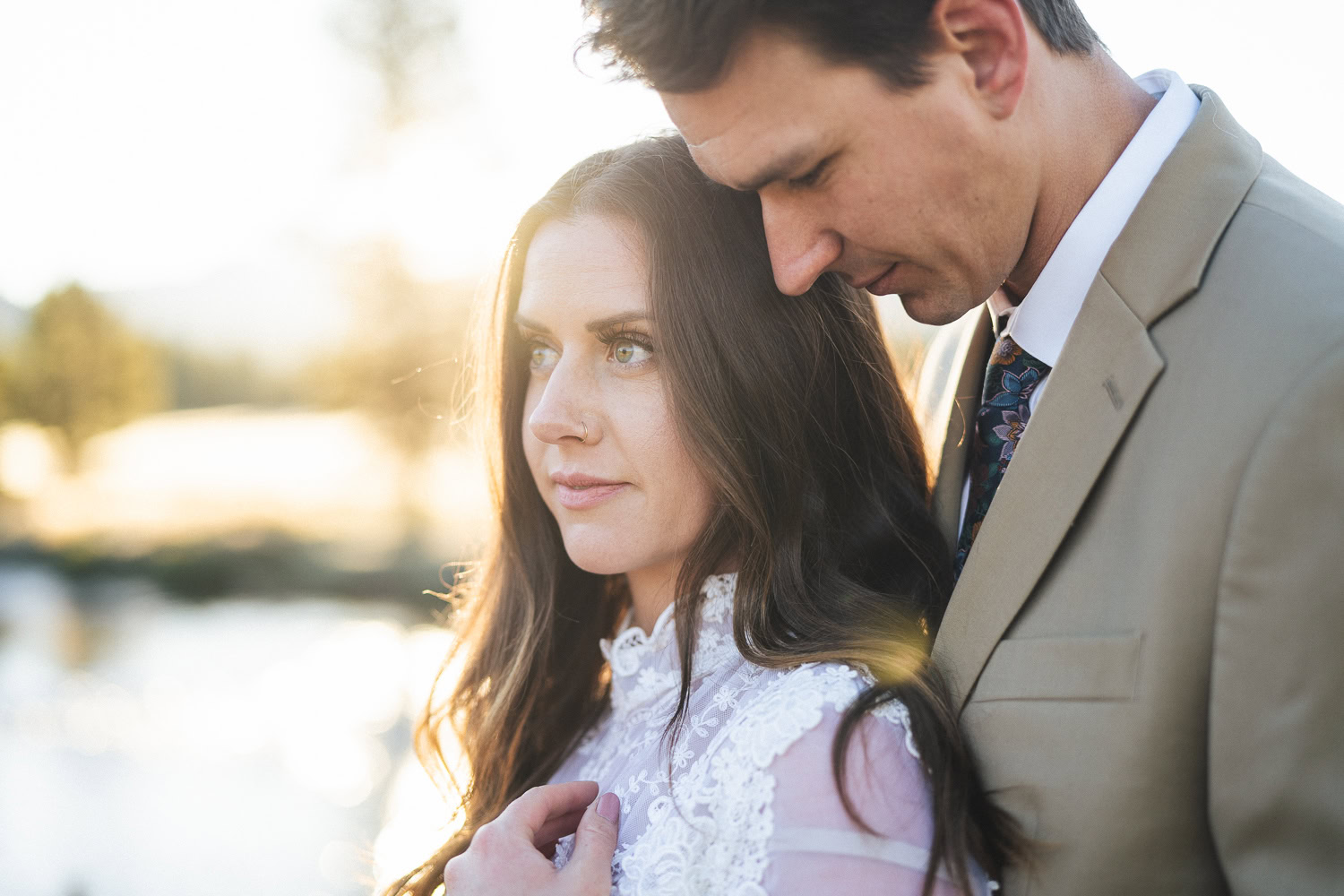
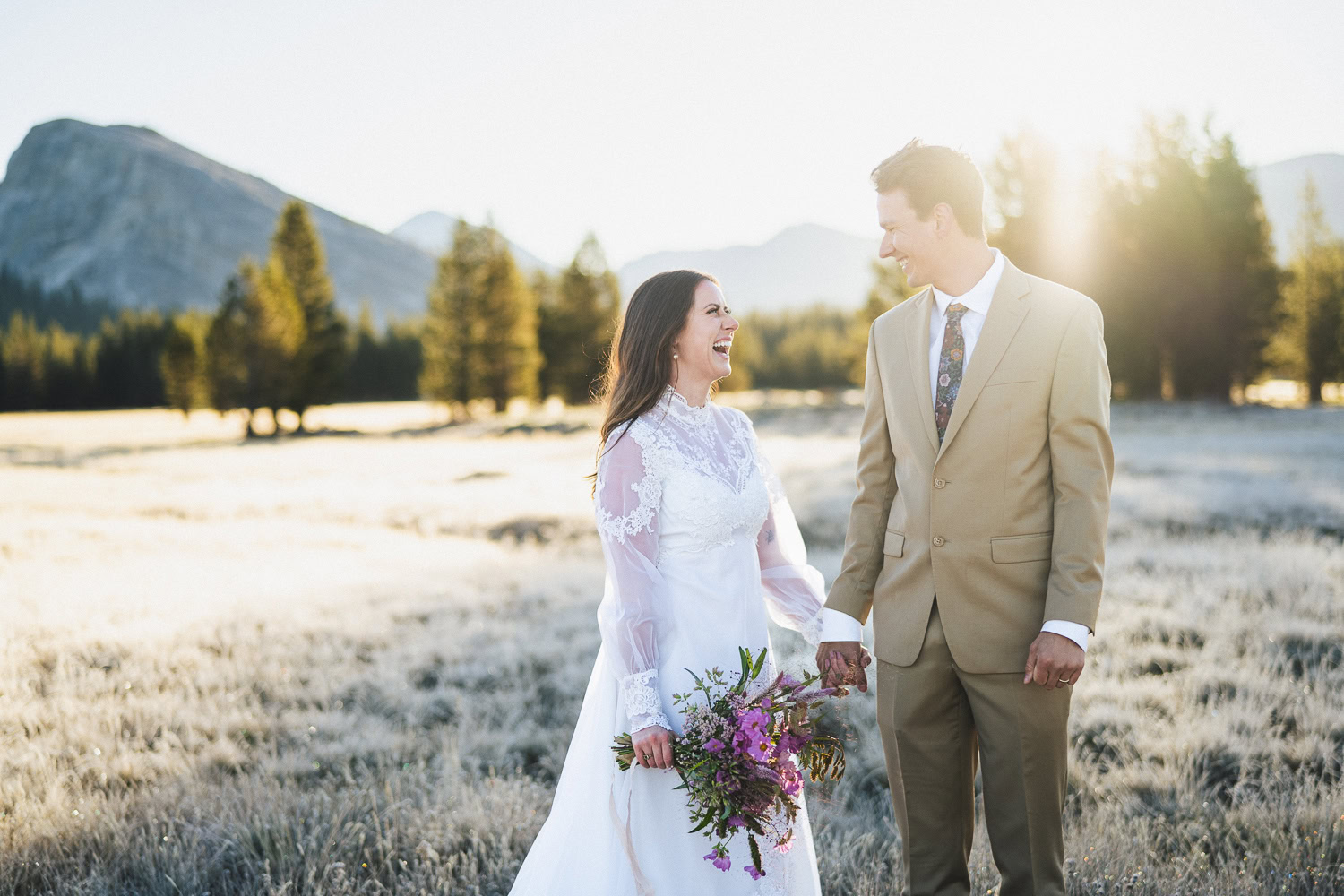
Backpacking
View Full Elopement Here: Backpacking Elopement
